

What's been said in the first half of this year.






What's been said in the first half of this year.



Navigating the 2025 landscape, Marex
A new era begins, AIMA
January
February
March April
June July May
Dubai's rapidly evolving alts landscape, DIFC
Family office transformation, PwC
Managing a crypto bullfight, Crypto Insights Group
Stand out to be interesting, H Squared
Using technology to strengthen investor relationships, Bite Stream
Cash is king, Capricorn Capital Partners
PE's institutionalisation & the talent shift, H Squared
Avoid missing the retailisation wave, Peregrine Communications
Real assets in institutional portfolios, Universal Investment Group
Investing in organic farmland, Iroquois Valley Farmland REIT
Navigating trade-offs in sustainable forestry, Forestry Linked Securities
RNG - a market poised for growth, Marex
Renewable energy infrastructure, Augusta Investment Management
Navigating commodity talent wars, EM Commodities
Data-led commodity pricing is transformational, General Index
Increasing access to alts, Morgan Stanley Investment Management
Retailisation in the EU, Dechert
Evolution of semi-liquid evergreen funds, S64
Evolving marketing mindset, Vistra
Why Cayman continues to be a popular jurisdiction, Carey Olsen
Cayman - delivering the highest standard, Waystone
Cayman a preferred choice for hedge funds, Grant Thornton
Cayman & co-investments, FundFront
Fund governance solutions & Cayman, Harbour
Systematic trading in digital assets, Temple Capital
Decoding crypto, Marex Solutions
Why crypto managers can't scale, Frontier
Achieving attitude control, Crypto Insights Group
Capturing asymmetry in blockchain, Theta Capital
Beyond bitcoin - seizing alpha, Definitive Finance
From proof of concept to proof of use, Walkers
Not all bank partnerships are equal, Federated Hermes
Shades of evergreen in private credit, Dechert
Beyond the crowd, Zugzwang Capital
Sharper operational execution in private credit, Bite Stream

So far this year, private markets have been defined by selectivity, scale and shifting global currents. Activity has been robust yet uneven, with several sizeable closes as managers navigate geopolitical tensions, volatile equity markets and evolving investor preferences.
Reports from Preqin and PitchBook show private equity fundraising broadly matching 2024 levels, but with capital concentrating heavily into the hands of mega-managers, as has been the case for a number of years. KKR’s latest buyout fund and EQT’s infrastructure vehicle are prime examples of successful closes, while smaller firms continue to wrestle with the same old longer fundraising cycles and more exacting LP requirements.
A notable feature of the year has been the ongoing rise of private credit, which has now cemented itself as a core allocation. Direct lending platforms and specialist credit managers are reporting strong inflows, as borrowers seek flexible capital and investors hunt for higher yields in this environment. According to Preqin’s mid-year data, private credit AUM is set to surpass $2.4 trillion globally, with insurance companies and family offices particularly active in the asset class. Spreads remain attractive, and managers with proven origination networks are finding plentiful deal flow even when traditional bank lending remains constrained.
Hedge funds have posted mixed performances. Global indices rose around 4% through end July (HFRI), with some multi-strategy
funds delivering double-digit gains. Equity managers are largely in positive territory, with healthcare the main detractor. Performance has at times been weighed down by heavy exposure to the US, which has occasionally lagged other regions, although managers traded opportunistically around President Trump’s various pronouncements, driving short-term swings. In Macro, discretionary managers benefited from the weakening US dollar and increasingly volatile commodity prices, while many systematic strategies struggled to gain traction, whipsawed by Trump.
Sector trends within private equity have been equally telling. Technology and software remain front-runners, driven by continued investment in AI, data analytics and cybersecurity. Energy transition themes are also drawing record allocations, with storage solutions, grid upgrades and clean-tech platforms still seeing strong demand as governments (ex-US) and corporates press ahead with climate commitments. In contrast, consumer discretionary and traditional retail have proven challenging; subdued spending in Europe and Asia has slowed exits and compressed valuations, making these segments difficult hunting grounds.
Geopolitical instability has remained a defining force in shaping capital flows throughout 2025. In Europe, energy security remains front of mind as the protracted war in Ukraine, coupled with renewed tensions in the Middle East and disruptions to key shipping routes
in the Red Sea, has driven investors further toward infrastructure, logistics and defence-linked assets. Across Asia, persistent concerns over Taiwan and the wider semiconductor supply chain have made investors more selective in advanced manufacturing and cross-border joint ventures, with many favouring on-shoring or “friend-shoring” strategies. In the US, Trump's renewed focus on tariff escalation and a more protectionist trade stance has already prompted private equity sponsors and strategic buyers to slow or rethink certain cross-border deals, building in wider risk premiums and channelling more capital toward domestic opportunities.
As Blackstone’s leadership noted on a recent earnings call, “Investors are rewarding those with scale, thematic clarity and operational discipline.” That sentiment neatly captures the story of 2025 so far: private capital remains a powerful engine of opportunity, but success belongs to those able to align ambition with prudent positioning in an increasingly complex global landscape.

Alastair Crabbe, Editor of The Alternative Investor & MD, Brodie Consulting Group

Chris Elliott, Head of European Prime Services Marketing, Marex
Shifting investor preferences, capital raising challenges and building operational resilience have been key themes over the last year and will continue to impact fund managers in the year ahead. To stand out and attract capital in 2025, fund managers will need to be agile, responsive to investor demands and operationally robust. Below are five trends that we believe will shape the year ahead.
SMAs have emerged as an important structure for many investors, even for some new fund launches. Offering a high degree of customisation, transparency and liquidity, allocators can structure investments to meet specific mandates and enhance control over risk and performance. The increasing popularity of SMAs signals a broader industry pivot toward bespoke solutions.
The large multi-strategy hedge funds, whether established or emerging, dominated the news in 2024. Commentators’ prevailing sentiment is that these very large multi-strat funds, which have grown significantly for so long, may now have reached their peak, contending with excess capital, disparity of
performance and fierce competition for talent.
Nevertheless, these large multi-strat funds will obviously continue to be a massive force in the market. A slowdown in their growth could lead to consolidation or opportunities for new players as well as increased investment in external managers to build diversified portfolios.
Perhaps more interestingly, multi-strat funds by definition remain broadly focused on the more mainstream liquid strategies. Investors looking to complete their investment portfolio may want to look towards managers, usually single managers, who specialise in the less liquid opportunities, emerging markets or some credit strategies. As a side note, given that the large prime brokers expend a lot of their capacity on the large platforms, managers who are focused on the more niche strategies may be better served by the smaller prime brokers. You can expect there to be more opportunities in the start-up space for these less liquid strategies.

Raising capital will remain a challenge for emerging managers – but there are still strong opportunities for lean, established firms with a proven track record and a differentiated value proposition.
A critical lesson learned from the




To stand out and attract capital in 2025, fund managers will need to be agile, responsive to investor demands and operationally robust.
Chris Elliott, Marex
past few years is that funds that tailored their strategies to meet allocator demands for niche, thematic and differentiated approaches saw greater success in attracting capital. This trend is likely to intensify in 2025. Emerging managers should align their strategies with regional and sector-specific trends, clearly articulating their unique edge in these growing areas to attract allocator interest. Customisation, personalised communication and demonstrating a deep understanding of the investor's goals will be key to securing capital in 2025.
The Middle East and Asia are emerging (or re-emerging in the case of Asia) as key growth regions for alternative investments. These regions have significant investment opportunities as well as open for business regimes.
We are seeing increasing interest in both medium sized and emerging funds in places such as Dubai, Hong Kong and Singapore. To unlock these opportunities, managers need to develop regionspecific approaches that consider local cultural nuances and regulatory requirements.
A strong local presence, with a team on the ground, and understanding regional dynamics are essential for a successful growth strategy in the Middle East and Asia. The importance of developing local networks and relationships, either directly or through an institutional partner, should not be underestimated.
As fund managers navigate these trends and seek to build a competitive edge in 2025, the importance of the right prime brokerage partner cannot be overstated. A strong prime broker provides more than just execution and financing; they offer strategic support, bespoke services, consultancy and the operational backbone to help managers scale and adapt effectively.
In 2025, fund managers should seek to partner with prime brokers that deliver high-quality, responsive and tailored services. This will play a critical role in helping them stay competitive and meet allocator expectations. Whether it’s supporting complex mandates, providing insights into new markets or streamlining operations, the right partner can make all the difference in achieving success.
Chris Elliott, Head of European Prime Services Marketing, Marex


Drew Nicol, Associate Director, Research and Communications, AIMA
2024 was a pivotal year for AIMA and the alternative investment industry. For several years, our industry has faced a wave of heightened regulatory obligations and risks mainly driven by the US Securities and Exchange Commission (SEC). Many of these measures created unnecessary burdens for the industry and imposed unintended consequences on managers and allocators alike.
We were proud to play our part in sparing the industry from the most egregious examples of this aggressive and, at times, poorly informed body of rulemaking, underscoring the value of proactive industry engagement. Our two landmark legal victories—the overturning of the Private Fund Adviser Rule and the expanded Dealer registration requirement, both found to be unlawful by federal courts—have reaffirmed the importance of this work. A third legal challenge, targeting SEC mandates on short sales and securities lending disclosures, is expected to conclude early this year. AIMA remains confident in the prospects for
a favourable ruling. The decision to challenge the SEC in court for the first time in AIMA’s more than 30-year history was not taken lightly and reflects our dedication to safeguarding the integrity of our industry.
With President Trump's imminent return to the White House and Paul Atkins's appointment as SEC Chairman, 2025 is poised to usher in a recalibrated regulatory environment. A departure from the aggressive rulemaking under Chairman Gensler is expected, favouring a more balanced agenda that supports both public and private markets.
Like President Trump’s first term, tax and regulatory reforms will likely form the foundation of the new administration’s economic strategy, potentially accelerating shifts in areas such as digital assets. Under Gensler, digital asset markets faced intense scrutiny, but Atkins'


The decision to challenge the SEC in court for the first time in AIMA’s more than 30-year history was not taken lightly and reflects our dedication to safeguarding the integrity of our industry.
Drew Nicol, AIMA



Private markets and alternative investments have a key role to play in fulfilling growth mandates, and once again, AIMA stands ready to do its part.
leadership signals a more constructive regulatory posture. A parallel shift is expected within the ESG sector, where reduced emphasis on sustainable finance could reshape investment strategies and corporate priorities.
However, assuming President Trump's return heralds a bonfire of red tape would be wrong. The first Trump Administration introduced frameworks, such as the SEC Marketing Rule, suggesting that refined regulation, rather than wholesale repeal, will guide policy. AIMA will continue to advocate for enhanced clarity and stability, promoting a regulatory environment that fosters growth while mitigating systemic risks.
The US remains the largest market for alternative investments, but global developments are increasingly shaping industry priorities. The rapid ascent of the Middle East as a financial hub
emerged as a defining trend in 2024, a momentum that is expected to persist. Simultaneously, APAC’s evolving role in capital flows and talent mobility presents both opportunities and strategic challenges.
If 2024 was a festival of democracy, with a recordbreaking number of people worldwide heading to the polls, then 2025 is a year to fulfil new mandates, many related to stimulating economic growth. As AIMA has argued in its UK and EU Vision Papers and in the many meetings with regulators and policymakers, private markets and alternative investments have a key role to play in fulfilling those growth mandates, and once again, AIMA stands ready to do its part.

Drew Nicol, Associate Director, Research and Communications, AIMA

Salmaan Jaffery, Chief Business Development Officer, DIFC
As the global shift in talent and capital flows defines the post-pandemic world, Dubai has emerged as the region’s preferred location for alternative investment.
Dubai has experienced a large influx of new entrants joining DIFC’s expanding alternative investments ecosystem, which includes large and smaller multi-strategy hedge funds, investment management platforms, and various others from Asia, North America, and Europe. Today the Centre is home to 65 pure play hedge funds, with 45 of these being part of the ‘billion-dollar club’. The recently launched DIFC Funds Centre is DIFC’s unique proposition for smaller asset management clients, seeking flexible working solutions, accelerated time to market, as well as networking opportunities to help them grow and scale.
Reflecting on this year, we unpack the Centre’s
exceptional progress as a preferred global hub for hedge funds and highlight the key trends that are shaping a strong outlook for the sector in 2025.
To further inform our view on sectoral trends, DIFC, in partnership with the Alternative Investment Management Association (AIMA), recently gathered over 30 senior executives from the alternative investments industry for a roundtable discussion in Dubai. This article builds on themes from that discussion which explored the region’s evolving investment climate, regulatory considerations, and practical strategies for hedge fund managers to get the most out of regional opportunities.
The Middle East’s geoeconomic position as well as its growing role in shaping the global economy


The UAE alone has a large concentration of private wealth, estimated at USD 996bn and Dubai has the highest concentration of wealth in any Middle Eastern city.
Salmaan Jaffery, DIFC

has accelerated the migration of hedge funds to Dubai. Whilst many hedge funds are managing existing portfolios in Dubai, establishing a presence in the city gives asset managers access a rapidly growing pool of private and family wealth, currently exceeding USD 4trn.
The UAE alone has a large concentration of private wealth, estimated at USD 996bn and Dubai has the highest concentration of wealth in any Middle Eastern city. Keen to tap into highgrowth opportunities within the country and the wider region, in contrast to the challenging operating environments in many traditional and established global financial hubs, alternative investment and asset management players are actively moving to the UAE.
Another key driver of DIFC’s transformation into a global hub for the alternatives investments industry is its robust regulatory framework, which has supported the sector’s rapid growth. The Dubai Financial Services Authority’s (DFSA) proactive stance on policy development, fasttracked approval process, risk-based approach to supervision, and open communication with stakeholders, has helped build a strong pipeline of applicants and enhanced the quality and scale of businesses coming to DIFC. A combination of this regulatory approach, an internationally recognised and independent common law system, and worldclass infrastructure have made DIFC the preferred destination for hedge funds.
The Centre’s hyper-connected ecosystem supports hedge fund and portfolio managers, especially those who are new to the region, providing them access to a broad range of support services. DIFC is the only financial centre in the region operating at scale and hosts prime brokers, law firms, tax advisors, consulting firms, recruitment agencies, and many others that collectively support its thriving business community.
Hedge funds and
alternative asset managers moving to Dubai, including those who already have longstanding client relationships in the region, recognise the importance of having people on the ground. Building a physical presence here allows them to be closer to their institutional and private clients and gain a better macroeconomic understanding of regional markets.
Firms setting up local offices to tap into the region’s growing pools of private and family wealth, are looking at their entry into Dubai as a long-term play and are aiming for a bigger footprint in the region. Hedge funds are starting to establish bigger to conduct a wide spectrum of portfolio and risk management, business development and marketing activities.
New and existing players in the sector have brought in key hires to their Dubai offices and have started building out their teams and expanding headcount, with many others planning to do so in the near future. For companies looking to hire top-tier talent, Dubai’s high quality of life is a key supporting factor. The migration of highcalibre financial services talent to Dubai is being driven by the emirate’s unparalleled offering for expatriates – one of the world’s top safest cities, long-term residence visas, zero-income tax policy, world-class housing, and international schooling standards. DIFC continues to attract some of the world’s brightest minds across the financial services spectrum, with nearly 44,000 high-calibre professionals.
Amidst growing optimism within the alternative investments sector, driven by exponential growth opportunities in the UAE and the wider region, during 2025, DIFC remains committed to propelling Dubai’s position as the destination-of-choice for hedge funds and the alternative investments sector.
























































































































































































































































































































































































































Christine Cairns, Partner, PwC
For decades, family offices have been entrusted with preserving generational wealth. They are now transforming into prominent players in various investments and deals across a wide range of asset classes. This transformation is a result of increasing professionalisation and specialisation in their investment strategies and processes, and many evolving into full-fledged family investment funds.
2024 Family Office Deals Study recently released by PwC provides an examination of the transactional behavior of 11,000 global family offices during 2024, highlighting their growing importance and influence in the global economy and investment environment. Of the family offices analysed, more than 75% were established since 1993, and about 50% since 2006, indicating that the majority are relatively young, established by first generation wealth.
Most family office owners are entrepreneurs or
entrepreneurial families, with only 5% owned by heirs. Increasingly, tech pioneers as well as hedge fund and private equity managers, dubbed "Wall Street billionaires," are entering this space, and naturally this trend has impacted their investment strategies.
The analysis identified several key trends:
• A two-year decline in family office investments that began in early 2022 now appears to have bottomed out, with both their deal volume and value stabilising.
• Exits by family offices have predominantly exceeded investments during the past decade. However, the aggregate deal value of these exits has generally surpassed their expenditure on new investments, indicating healthy returns.
• Family offices are major players in funding innovation, responsible for 31%


Since 2014, family offices have generally shifted their investment focus away from real estate and funds and towards direct investments...
Christine Cairns, PwC

of investments in start-ups, with 83% of those executed as club-deals. Generative AI (GenAI) is one of the fastest growing and most popular areas for family office investments in start-ups.
• Since 2014, family offices have generally shifted their investment focus away from real estate and funds and towards direct investments (i.e., start-ups and M&A). However, over the past two years, real estate deals have regained some ground as a proportion of family offices’ overall investments.
• Family offices favor "club deals," where they co-invest alongside other investors. These deals have recently accounted for 60% of their investments by volume.

Across the industry, funds are increasingly aiming to attract more family capital. One of the drivers for the shift in investment patterns by family offices is the desire for higher returns and greater control over investments. Therefore enhanced flexibility and control in the product is important. Customisable investment options also appeal to family offices. This could include tailored fund structures that allow family offices to have a say in investment decisions or a greater abundance of co-investment opportunities.
One of the drivers for the shift in investment patterns by family offices is the desire for higher returns and greater control over investments. Therefore enhanced flexibility and control in the product is important.
The United States remains the most active target market for family office investments worldwide, with a deal share of 47%. Europe has lost ground recently but remains in second place globally with 32% of all deals.
Family offices have been steadily increasing their participation in impact investments over the past ten years in areas such as education and renewable energy. In the first half of 2022, impact investments accounted for more than 50% of their total investments for the first time, and this has been increasing ever since.
PwC’s research confirms that family offices are continuing to transform and evolve their structures, processes, skills, and investment behaviors to reflect developments in different asset classes and their own growing maturity as organisations. In addition, the “NextGen effect” appears to be significant, with the next generation of family business owners increasingly interested in working in family offices and investing in new technologies and sustainable initiatives.
Christine
Cairns, PwC
Family offices are clearly showing a growing interest in impact investments. Funds that focus on sustainable and socially responsible investments can attract more family offices looking to align their investments with their values. In addition to this, measurable impact is key - highlighting the measurable social and environmental impact of the investments can further appeal to family offices committed to making a positive difference.
Like the global investment markets and the asset classes within them, family offices are constantly transforming. In stark contrast to their traditional image, they’re increasingly agile, innovative and forward-thinking investors, actively seeking out new opportunities and strategies, and playing an ever more important role in a widening range of markets and asset classes. In a changing world, family offices are a group of investors with their eyes firmly fixed on the future.

PwC’s 2024 Family Office Deals Study can be found here
Christine Cairns, Partner, PwC

Vin Molino, COO & Head of ODD, Crypto Insights Group Corp
A year ago I wrote a piece for this forum, “How to Run With the Crypto Bulls,” as the crypto market was starting to build momentum and the path to potential positive returns was becoming clear. In the piece, I used the running of the bulls in Pamplona, Spain, as an allegory to illustrate how to execute an investment in crypto from an experienced risk management perspective.
Full disclosure: I did not have a crystal ball to predict the wild run that Bitcoin and other crypto assets would go on in 2024. Nor could any of my Political Science classes in college have taught me to foresee the result of the U.S. presidential election and its potential impact on growth and regulation in the digital assets space. Now, as we look to the coming year—and those of us who have committed to allocating capital to crypto have entered the Plaza de Toros arena along with the boisterous crowds—let’s consider the ways a matador would manage a big charging (crypto) bull.
To start with the various means by which one can invest in crypto, we’ve observed institutions, such as public pensions, choose to invest via ETPs (or ETFs in the U.S.) rather than hold tokens directly. As more ETP providers develop products beyond single-asset funds, desirable features such as entry access and regulatory rails (e.g., qualified custody) are becoming more readily available.
In addition, the maturing crypto alternative investment space has significantly caught up to the standards many institutions expect from their hedge fund allocations. Both established hedge fund managers and many emerging crypto-only managers have strengthened their policies and controls with respect to areas such as counterparty risk management, safekeeping and transacting of crypto assets, and abiding by a pragmatic compliance framework, as I observed in my due diligence in 2024. A matador would therefore do well to consider the return and risk profile


Although we all know the eventual outcome of a bullfight, it should not take away from the skill and risk management of an experienced matador, or in this instance, a knowledgeable crypto investor.
Vin Molino, Crypto Insights Group Corp



...understanding the playing field, having the right tools available, and anticipating when to get out of the way of a charging bull can all generate a successful opportunity to once again shout ¡OLÉ!
of crypto hedge funds when formulating an institutional crypto portfolio in 2025.
Next, looking to investment options beyond trading tokens, DeFi yield generation via staking should also be part of the institutional tool kit at this point in the crypto bull cycle. Based on my research over the past year, staking has continued to mature from an investment return and risk management perspective, as continuous improvements are being made in the areas of smart-contract development and auditing. And although institutional investors may not yet be familiar with transacting through decentralized infrastructure, investment vehicles have been brought online (no pun intended) to provide access to this market via tokenized pools, traditional private placements, and robust collateral management controls.
Lastly, various stablecoin offerings present the means for institutions to diversify their crypto allocations. In lieu of traditional money market funds, investors can now put short-term capital to work in either yield-generating stablecoins or tokenized money funds. To offset the “crypto risk” of
stablecoins, many providers invest their capital directly into government-backed debt (e.g., U.S. Treasuries), exercise improved liquidity management, and (for certain stablecoins) abide by regulatory standards and traditional custody safekeeping.
Although we all know the eventual outcome of a bullfight, it should not take away from the skill and risk management of an experienced matador, or in this instance, a knowledgeable crypto investor. Yes, there will be volatility during the action of the moment, but understanding the playing field, having the right tools available, and anticipating when to get out of the way of a charging bull can all generate a successful opportunity to once again shout ¡OLÉ!
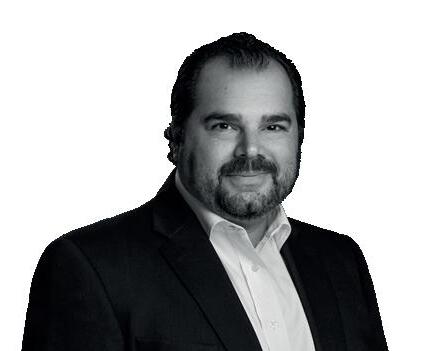

Max Heppleston, Managing Partner, H Squared
2024 has been an interesting year for the alternative investment space, with activity across the board.
Family offices are significantly increasing their allocations to private markets and alternative investments, with nearly 52% of portfolios now allocated to areas like private equity, private credit, and infrastructure,
This year we have been working with a number of single and multi-family offices building out teams to cover alternatives, particularly middle market private equity, a trend that has grown this year and will certainly continue to do so next year as families diversify their portfolios to achieve higher returns while leveraging their long-term investment horizons. We have also seen an increase in direct deals and co-investments with families as they seek truly alternative deals, highlighting the growing sophistication of family offices.
Secondaries have also grown in the private wealth space and will likely continue to do so next year, with firms like Franklin Templeton & Lexington Partners, Coller, and Carlyle pushing deeper into the space.
Another place we have been doing a lot of work is in the distribution space for small to mid size alternative managers looking to institutionalize their teams, bringing on consultant relations specialists, splitting the ever-growing wealth channel into RIAs, Family Offices, etc, and the regionalisation of these teams as they seek "boots on the ground" to cover key regions, highlighting how firms recognise the need for specialists in channels and regions.
APAC will continue to grow as firms now look to hire local people in markets such as Korea and Japan, looking for people who speak the languages, know the cultures, and have deep


...we have been working with a number of single and multifamily offices building out teams to cover alternatives, particularly middle market private equity...
Max
Heppleston, H Squared

product knowledge opposed to more generalist capital raisers.
Digital Infrastructure also seems to be a white-hot space right now fueled by the rise of generative AI and subsequent demand for data centers. This paired with the need to power these data centers with sustainable energy, our clients have been looking at opportunities from battery plants and traditional renewables to small modular reactors.
There seems to be growing appetites for real assets and hedge funds too in investors search for alpha, with real estate infrastructure and natural resources mixed with a low carbon economy and digital infrastructure driving real assets, and hedge funds as investors look for uncorrelated returns and risk mitigation strategies, notably with the implementation of AI and growth in quant strategies.
A growing number of platforms such as Millennium, are allocating externally
to smaller funds, effectively seeding and backing new talent. According to a Goldman Sachs report, approximately 70% of multi-manager funds are now engaging in external allocations, up significantly from 50% in 2022, which could potentially reverse the recent trend of hedge fund closures outstripping new launches offering a much needed lifeline.

2025 seems set to be an interesting year as investors continue their search for returns and become more sophisticated, firms and people that can truly differentiate themselves and tell a story should find themselves well positioned.


2025 seems set to be an interesting year as investors continue their search for returns and become more sophisticated, firms and people that can truly differentiate themselves and tell a story should find themselves well positioned.
Max
Whether you’re looking to work with a single prime or diversify your prime brokerage counterparties, access the solutions you need as your business evolves.
• Portfolio financing
• Securities lending
• Segregated custody
• Middle and back office support
• Capital introduction
• New launch and business consulting
• Outsourced trading
• Commission management
Diversified. Resilient. Dynamic. A diversified global financial services platform
Learn more at: marex.com primeservices@marex.com


Henry Reynolds, CEO, Bite Stream
Private equity (PE) fundraising timelines hit a record 19 months in 202411, as fund managers prolonged closings to support investors dealing with liquidity issues from overallocation and weak distributions. This prolonged cycle pressures PE firms, especially mid-market and smaller managers with lean investor relations (IR) teams. These teams struggle to manage the increasing volume of communications, compliance tasks, and reporting, creating bottlenecks that hinder fundraising efficiency and investor satisfaction. Yet, opportunities in the asset class remain abundant—global PE assets under management are expected to reach $1.25 trillion by 2033, growing nearly 10% annually.2
To meet fundraising targets, firms are looking beyond their traditional investor base, tapping new capital sources, exploring new regions, and engaging different investor types. Managing these relationships and coordinating disparate systems strains IR teams. Technology can centralize processes, reduce submission errors, improve data accuracy, and streamline operations with tools like smart forms and e-signatures.

PE has traditionally thrived on relationships, strategy, and trust. However, inefficiencies in investor management—like disconnected CRM systems and manual compliance processes—have hindered fund managers and their investors. The industry’s reliance on fragmented technology has forced teams to work around tools instead of benefiting from them.
Investor onboarding highlights this issue. While digital advances like electronic subscription documents and automated KYC/AML checks have improved parts of the process, system fragmentation creates inefficiencies, slowing fundraising and increasing internal burdens, reducing the investor experience.
To address these challenges, PE firms are increasingly adopting integrated, end-to-end platforms that unify

...private equity firms are increasingly adopting integrated, end-to-end platforms that unify investor interactions, compliance, marketing, and reporting.

investor interactions, compliance, marketing, and reporting. These solutions provide a single source of truth, enabling firms to operate more efficiently while giving investors better access to real-time data, resulting in stronger client relationships built on transparency and streamlined communication. They also play a key role in risk management—centralized data management reduces cybersecurity risks, ensures compliance, and helps safeguard a firm’s reputation.
Key advantages of integrated platforms include:
1. Stronger client relationships: Enhanced transparency and clearer communication help build trust and long-term engagement. Investors gain real-time access to fund performance, commitments, and reporting, and experience a premium, consistent user experience with seamless data access.
2. Access to new distribution channels: Facilitate entry into new jurisdictions, connecting firms with wealth managers, private pools of capital, and a broader investor base, helping them scale efficiently.
3. Operational leverage: Automation and streamlined operations enable firms to do more with less. By reducing manual data entry and eliminating
bottlenecks, IR teams can focus on relationshipbuilding, improving efficiency and performance.
Today’s investors demand transparency, faster reporting, and seamless communication. While strong fund strategies matter, slow service and outdated processes frustrate investors. In an increasingly competitive capital-raising environment, technologydriven firms will stand out by offering superior investor experiences.
The private equity industry has reached a turning point. Firms embracing digital transformation won’t just raise capital faster—they’ll redefine what it means to be investor-first in the next decade.

Henry Reynolds, CEO of Bite Stream
Bite Investments is a global financial technology company providing innovative and scalable software solutions to the ever-expanding alternative asset and wealth management industry. The firm’s SaaS platform, Bite Stream, offers end-to-end solutions designed to simplify and streamline the entire investment process, from fundraising and investor relations to reporting and data management. With a commitment to security and efficiency, Bite Investments is trusted by its clients, leading alternative asset and wealth managers, fund administrators, and a range of other investment professionals worldwide. www.biteinvestments.com


While strong fund strategies matter, slow service and outdated processes frustrate investors. In an increasingly competitive capitalraising environment, technologydriven firms will stand out...
Henry Reynolds, Bite Stream

Ricardo Delgado, Principal, Capricorn Capital Partners
Irecently saw a chart in the Financial Times which triggered a childhood memory. From a young age, I was interested in investing and my father encouraged this characteristic by acting as my broker come custodian for my desired transactions. There was one trade where I wanted to take a bet on the South African Rand against the United States Dollar (silly me on two accounts – firstly betting against the greenback and secondly thinking I had become an overnight emerging markets FX trader). For several weeks, the trade made me look like 1990’s George Soros until one fateful day when the South African government scored one of its many own goals and its currency significantly weakened overnight. At this point, my father taught me a valuable lesson about paper valuations
being as useful as a woodpecker with rubber lips, whilst “Cash is King!”

Back to the chart, it showed the distributions to paid-in capital (DPI) for global PE funds dating back to 2007. Vintages between 2007-14 follow a similar trend returning significant distributions to LPs, however vintages between 2019-22 are tracking >75% lower at a comparative stage. The chart also referenced that PE funds were sitting on a record 28,000 unsold companies worth more than $3tn. LPs have not just sat back as holding periods have drifted well beyond the old industry norm of 5 years (As of 2024, 43% of the UK private equity portfolios had been held for longer than 5 years). Consequently, LPs have started to force GPs to prioritise distributing cash. The industry has adopted a new mantra – “DPI is the new IRR”, with DPI replacing Internal Rate


The industry has adopted a new mantra – “DPI is the new IRR”, with
DPI replacing Internal Rate of Return (IRR) as the industry’s key performance indicator.
Ricardo Delgado, Capricorn Capital Partners



As the industry evolves, both GPs and LPs will need to adapt to this new paradigm, where cash returns take centre stage in evaluating private equity performance.
of Return (IRR) as the industry’s key performance indicator. We are all well aware of the macroeconomic challengers over the last 2 to 3 years which have driven this trend, including higher interest rates, inflation, and volatile equity markets.
Many LPs have experienced liquidity pressures across their portfolios and are valuing funds that can deliver earlier with more consistent distributions. Likewise, this focus has influenced fund strategies, with many GPs increasingly adopting shorter investment horizons and targeting sectors with faster exit timelines (with technology and growth being the recent industry darlings). This also coincides with the significant growth of continuation funds and secondaries over the last few years, as GPs have searched for alternative liquidity options.
While the focus on DPI benefits LPs, it poses challenges for PE funds. Prioritizing distributions may pressure managers to exit investments prematurely, potentially leaving unrealized value on the table. This could impact long-term fund performance, as measured by Total Value to Paid-In (TVPI) and IRR.
The art for the GP will be balancing short-term liquidity needs with long-term value creation. As the industry evolves, both GPs and LPs will need to adapt to this new paradigm, where cash returns take centre stage in evaluating private equity performance. Perhaps this follows the old adage of “A bird in the hand is worth two in the bush”.
Ricardo Delgado, Principal, Capricorn Capital Partners
Capricorn Capital Partners is a family-owned, international, private investment business that invests in outstanding management teams. Capricorn started in 1994 as the investment arm of the Hollard Insurance Group in Southern Africa. Since then, it has built a highly successful investment track record. www.capricorncapital.com

Max Heppleston, Managing Partner, H-Squared
Private equity is undergoing a significant transformation, driven by evolving market demands and shifts. Hiring trends reflect these changes, particularly in the middle market, fundraising and private wealth channels, as well as in product development for the wealth management sector.
Nothing highlights this more than the institutionalization of small to mid-sized firms that have been going through the process to enhance their competitiveness. This transformation has involved establishing new channels and teams to engage and deal with different investor types, such as consultant relations teams, building out new wealth channels and product development.
In these firms, consultant relations have often bolted on institutional sales as an extra and not given the
time and dedication such roles need to develop these relationships, as well as learning how much of a long game consultant relations can be.
Within the private wealth space, large and small firms have been breaking down client types as they target the assets of HNW clients, with separate teams now focusing on wirehouses, IBDs, RIAs and

Firms have also had to double down on product development and management, fueling hiring activity, creating evergreen and interval fund structures to meet the increased need for liquidity, and increasing demand for professionals with experience in structuring and regulatory compliance.
The recent appetite from family offices for private equity has led to heightened demand for people who can partner with these family offices and understand their particular needs, time horizons, and risk


...institutionalization of small to midsized firms... has involved establishing new channels and teams to engage and deal with different investor types, such as consultant relations teams, building out new wealth channels and product development.
Max Heppleston, H Squared



Private equity is evolving... To fit in, firms are having to enhance investor engagement, segmenting private wealth channels, and developing more innovative products to meet the growing demand for liquidity and accessibility.
profiles – these are people with strong relationships and credibility in the space. Such skills are seen as crucial to building and maintaining trust with family offices, which are not always straightforward, given the intricacies and nuances of multi-generational family dynamics and providing that personalized service.
The secondary market is also in the ascendancy as firms look for liquidity solutions, with high demand for individuals who can manage secondaries – in private credit and/ or real assets – with the likes of Ares pushing hard into both secondaries and private wealth.
The Middle East and APAC regions have been increasingly targeted by private equity firms as they strike partnerships with sovereign wealth funds and local family offices, encouraging firms to get boots on the ground in a host of countries. This geographic expansion requires a team with local expertise, as well as linguistic and cultural fluency. There has also been a definite regional surge in demand for individuals who can source deals, fundraise / access both institutional and wealth markets, and run portfolio operations.
We have also seen firms striking up highly significant strategic partnerships, such as BlackRock and Partners Group, as they look to create new products
Private equity is evolving into a more complex and dynamic industry, driven by institutionalization, global expansion and evolving investor needs. To fit in, firms are having to enhance investor engagement, segmenting private wealth channels, and developing more innovative products to meet the growing demand for liquidity and accessibility.
The rise of family offices, secondary markets, strategic alliances and global expansion underscores the increasing need for specialized talent, trustbuilding expertise and the local market knowledge. As competition intensifies, firms must differentiate themselves in this increasingly busy landscape, ensuring they have the right people, strategies and partnerships to stay ahead.
Max Heppleston, Managing Partner, H-Squared






Josh Cole, Co-CEO, and Bill McIntosh, Managing Director, Peregrine Communications
In a new report, Peregrine Communications and Boston Consulting Group consider what asset managers should be doing to tap into the growing retailization of private markets. This phenomenon, arguably the single most important secular trend in asset management, is creating incredible opportunities, both for investors and asset managers alike.
The numbers bear this out. Global financial wealth is projected to grow by around 5% percent annually through 2030, potentially reaching $350 - $400 trillion. Retail investors, meanwhile, are expected to triple their allocations in private assets from single digits to 10-12% over the same period.
Unsurprisingly, traditional long only asset managers are eager not to be left out and are expanding their alts offerings
to capitalize on this trend. For firms with strong retail brand recognition like a Schroders or a Franklin Templeton, there is a need to convince retail audiences of their (relatively) newfound alternatives capabilities.

For private markets firms with no retail brand recognition, the challenge is to build a brand platform that is able to meet retail and wealth audiences where they are and educate them about the role alternatives can play in asset allocation. Some firms such as Blackstone, Apollo and KKR have enhanced brand recognition as alternative assets investors, but many of their smaller peers are far
In many cases, this could be an opportunity for alts managers to set out their story. At its most basic, effective brand building requires a clear articulation of why the firm exists and a compelling delineation of its differentiated capabilities or edge.


Some firms such as Blackstone, Apollo and KKR have enhanced brand recognition as alternative assets investors, but many of their smaller peers are far behind.

Education can help with this, starting from investors’ needs and building out from there rather than start from sales priorities and work backwards to content that might make those products appealing to investors. One way of looking at whether the content firms are creating is meeting investors’ needs is to assess how well the material on their website attracts inbound, nonbranded search interest.
Our research in this area shows that the average private markets firm scores poorly for SEO, clearly suggesting that there is a lot of work to do in terms of providing indemand educational content. To benefit from retailization, this is crucially important.
If private markets firms can become more effective at branding and marketing, it’s clear that they have a powerful offer for wealth audiences given their ability to repackage private equity, credit and other co-investments into retail products. What’s more, giving
investors direct exposure to these asset classes and the diversification benefits of a portfolio of managers in one product is likely to prove to be an appealing marketing proposition for advisor networks.
Private markets firms often find it easier than traditional managers to demonstrate edge through their hands on investments. Instead, the challenge for them is to create an overarching narrative that can help investors understand how deal flow and other news connects with the purpose and investment strategy of the asset management house.

Josh Cole, Co-CEO, and Bill McIntosh, Managing Director, Peregrine Communications


If private markets firms can become more effective at branding and marketing, it’s clear that they have a powerful offer for wealth audiences given their ability to repackage private equity, credit and other coinvestments into retail products...

Kurt Jovy, Head of Real Estate, Universal Investment Group
In 2025, real estate transaction activity is expected to gradually recover, driven by improved interest rate clarity and more realistic pricing expectations. Against this backdrop, German institutional investors are evolving their real estate strategies for a more global, diversified, and sustainability-conscious future, ensuring the asset class continues to anchor portfolios through market cycles.
While real estate continues to play a central role as a portfolio stabiliser and inflation hedge, our latest survey reveals shifting allocations and the pursuit of ESG poses a tension between value and cashflow that investors must carefully assess.
While ESG measures can enhance property values, they often reduce achievable cash flows. This fundamental trade-off adds complexity to a broader ambition for sustainability.
Our survey found that half of investors are considering reducing their real estate allocation plans to reinvest in alternatives such as infrastructure, which particularly in the renewable energy sector offers stable returns over
long durations while supporting the energy transition and broader ESG goals.
However, as current cash flow return remains an important yield metric for more than 80% of respondents, aspiration for sustainability and long-term value with near-term cash flow expectations presents a critical question of prioritisation.
Though ESG is increasingly shaping investment decisions, the path to full integration remains uneven. Many investors have implemented ESG-compliant acquisition criteria or introduced green leases, but fewer than 10% report fully integrating regulatory ESG requirements.
Beyond the push towards sustainability, German institutional investors are increasingly diversifying geographically and across asset types.
Global expansion is set to continue, with investors planning to nearly quadruple their Asia-Pacific allocations to 8% and sharply increase North American




... real estate remains a cornerstone of institutional portfolios, representing an average of 25% of allocations. Its blend of income stability, inflation protection, and long-term value preservation supports enduring relevance.
Kurt Jovy, Universal Investment Group
and non-domestic European allocations to 16% and 21%, respectively. Meanwhile, domestic (German) allocations are expected to decline accordingly from 69% to 53%.
Simultaneously, diversification by usage type is accelerating. Residential properties have emerged as the clear growth segment, with allocations expected to rise significantly, driven by their attractive longterm risk-return profile, supported by rising rents and stable cash flows. Conversely, office properties are declining in importance as investors assess future demand, reflected in a decrease from 39% to 33%.
Interestingly, this expanding diversification does not signal a greater appetite for risk. Investors remain largely risk-averse, with core investments the preference for 64% of respondents, followed by core+, the preference for 44% of respondents. This risk-
averse approach is reinforced by the fact that emerging markets continue to play little role in future plans.
This conservatism underscores the role of real estate in institutional portfolios. Three-quarters of surveyed investors continue to view real estate as a crucial inflation hedge, even as rising bond yields create new competition, firmly cementing it as a stabiliser rather than a yield-booster.

Ultimately, real estate remains a cornerstone of institutional portfolios, representing an average of 25% of allocations. Its blend of income stability, inflation protection, and longterm value preservation supports enduring relevance. The question that looms now is how allocation will be prioritised as investors eye a more sustainable future.
Kurt Jovy, Head of Real Estate, Universal Investment Group

Chris Zuehlsdorff, CEO, Iroquois Valley Farmland REIT
In 2007, two former college roommates from Loyola University Chicago recognized the urgent need for a healthier and more regenerative food system. They sought a solution for both environmental challenges and the growing public health crisis arising from conventional, consolidated agricultural practices. With a doctor’s understanding of the human body and a commercial banker’s expertise in real estate finance, Mr. Miller and Dr. Rivard established Iroquois Valley Farmland REIT to prove that cultivating healthy food is not only morally imperative, but also a rewarding investment.
Today, farmland as an asset class is valued at $3.2 trillion, and as reported by American Farmland Trust, 40% of that land is expected to change hands within the next 15 years. Yet, farmland remains underrepresented in institutional investment portfolios, with less than 5% currently allocated to this asset class and a mere 2% of farmland certified as organic.
This dynamic presents a significant and compelling investment opportunity, particularly in U.S. Certified Organic farmland. The potential for growth is both economically attractive and aligned with the demand for food produced with stronger environmental and human health outcomes. According to the Organic Trade Association, organic grocery sales outpaced non-organic by more than a 2-to-1 margin. Consistent organic price premiums lead to higher farm profitability. Research by Purdue University supports higher per acre returns to organic farming operations with average 10-year returns of $479 per acre for organic relative to $249 per acre for conventional farms.
According to Dr. Bruce Sherrick, Director of the TIAA Center for Farmland Research, interest in real estate and alternative investments has surged in recent years. Forbes recently reported that the number of financial advisors recommending alternative investments to clients has grown from 25% in 2020 to 55% in 2024


...agricultural real estate stands out for its robust historical performance, offering investors a hedge against inflation, a low correlation with equity markets, and a relatively low risk of capital loss with consistent income generation.
Chris
Zuehlsdorff, Iroquois Valley Farmland REIT



Through a unique REIT structure where farmland can be held indefinitely, the impact-driven investment company is supporting farmers by expanding their current operations, raising more organic food and ensuring their farmland stays organic for generations...
Chris Zuehlsdorff, Iroquois Valley Farmland REIT
(Fred Hubler, 9/10/2024). Among these alternatives, agricultural real estate stands out for its robust historical performance, offering investors a hedge against inflation, a low correlation with equity markets, and a relatively low risk of capital loss with consistent income generation. Over the 33-year history of the National Council of Real Estate Investment Fiduciaries’ (NCREIF), farmland has delivered an average annual return of 10.29%, with a relatively low standard deviation of 6.74%. By comparison, the Dow Jones index has averaged just over 8% with a standard deviation of 14%. Importantly, the minimum return for farmland during this period was +2%, while the Dow Jones index recorded a significant loss of -41.3%. This risk-return profile positions farmland, particularly organic farmland, as an increasingly attractive asset class.
We have one generation left to transform America’s farmland and rebuild its depleted soil. By growing the footprint of organic, regenerative farming across the country at scale, Iroquois Valley supports farmers with a vision for healthy soil, healthy food
and healthy people. Through a unique REIT structure where farmland can be held indefinitely, the impactdriven investment company is supporting farmers by expanding their current operations, raising more organic food and ensuring their farmland stays organic for generations to come. In a shifting landscape, the opportunity to align investments with impact will generate long-term agricultural and financial success.

Chris Zuehlsdorff, CEO, Iroquois Valley Farmland
Iroquois Valley Farmland REIT, PBC, is a pioneering farmland investment company focused on organic, regenerative agriculture. The company provides long-term nancing to organic farmers and works to build a more resilient food system by preserving farmland for organic production.

Charlie Sichel, Managing Partner, FLS ® Forestry Linked Securities
The UN’s 2004 Who Cares Wins report is widely credited with bringing ESG into the mainstream, spreading the gospel that investors could make money while saving the planet. The idea that green investing and profitability went hand in hand took hold.
But as sustainable investing turns 21, that narrative is evolving. Sustainable funds are struggling with lacklustre performance and investor outflows, while fossil fuels remain the world’s leading source of energy. The prediction that saving the planet will automatically maximise profits has proven overly simplistic. Like many 20-somethings, the sustainable investing movement is letting go of ideological purity and embracing a more pragmatic view of how to make money morally.
Every investment involves trade-offs, with forestry no exception. The next chapter in forestry is about navigating these choices—balancing financial returns with carbon sequestration, biodiversity, and social impact. By doing so, we can create a truly sustainable long-term investment.
Trees, one of our best tools in the fight against climate change, only capture significant carbon while they’re growing. That’s the rationale behind greenfield monocultures—large-scale, from-scratch plantations that are profitable, create jobs, and indirectly reduce deforestation pressure on older forests. However, there’s a catch: when poorly structured, monocultures contribute little to biodiversity. While they deliver in terms of carbon capture and financial returns, they lack the ecological benefits of natural forests.
So, what’s the solution? A more balanced approach in the form of ‘mosaic forestry’. This model integrates commercial timber operations, conservation efforts, and local engagement into a unified framework. It’s about finding equilibrium, securing long-term revenue streams while enhancing biodiversity and supporting local communities. This lays the groundwork for longterm project stability and for use of a better word, it establishes a more sustainable model.
The design of a mosaic forest typically preserves or establishes conservation (or riparian) corridors where

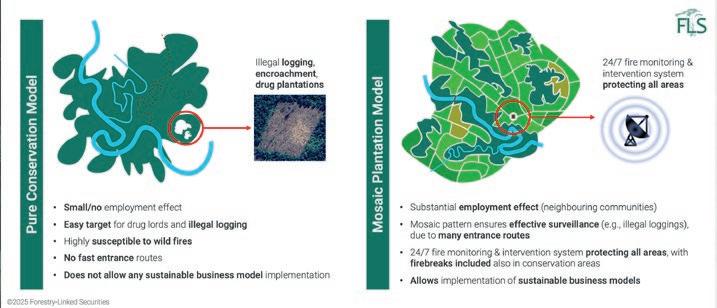



In greenfield
mosaic afforestation,
there is a pragmatic way to blend financial returns with carbon sequestration, biodiversity, and social impact. Only by combining all of these, can we create a truly sustainable investment.
Charlie Sichel, FLS ® Forestry Linked Securities
fauna can co-exist within commercial plantations, thereby actively supporting biodiversity. When this is carried out in neglected pasturelands with degraded soils, then the positive impact can be substantial.
Combining commercial and conservation efforts can create valuable operational synergies which protect natural forests from threats like wildfires and illegal logging. The commercial part enables firebreaks, establishes sophisticated monitoring protocols, and instils regular intervention, while also delivering long-lasting social benefits, such as job creation and cyclical replanting of harvested wood.
At a time when staying below 1.5 degrees1 looks increasingly unattainable, and there is a supply deficit of wood requiring up to USD4.5 trillion by 20502, there would seem the makings of a perfect trade-off.
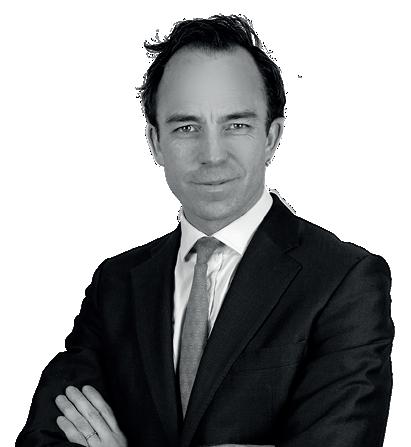
In greenfield mosaic afforestation, there is a pragmatic way to blend financial returns with carbon sequestration, biodiversity, and social impact. Only by combining all of these, can we create a truly sustainable product.
Charlie Sichel, Managing Partner, FLS ® Forestry Linked Securities
Forestry Linked Securities (FLS®) is a capital markets platform that develops and structures forestry investments for capital market investors, offering attractive returns, carbon sequestration, and best-in-class analytics and reporting. www.forestry.earth
1. UN.org: Under the Paris Agreement, countries
2 FAO: “The State of the World’s Forests 2022”, FLS analysis

Jack Velasquez, Director of Environmental Markets, Marex U.S.
The Renewable Natural Gas (RNG) market has long been seen as a niche segment of the clean energy transition. However, it is gearing to become the next significant investment opportunity within environmental markets as RNG captures the attention of investors seeking exposure to sustainable real assets. Just in the United States, 500 facilities are likely to be operational by the end of 2025, with that number predicted to double by 2030.
For investors, this is more than a sustainability play— it’s a relatively untapped market with considerable upside, particularly in the Renewable Thermal Credit (RTC) space. While still nascent, RTCs represent an emerging financial instrument that could play a pivotal role in decarbonization strategies for corporations navigating complex regulatory landscapes. These financial instruments, akin to Renewable Energy Credits (RECs) in the electricity sector, provide companies with a market-based mechanism to offset emissions from thermal energy use.
While the RTC market remains relatively illiquid, there is growing interest among institutional capital to participate

in this emerging space as the overall REC market is forecasted to grow to $40 billion by 2033. Early investors are structuring their involvement by purchasing RTCs directly from producers, financing RNG infrastructure projects, and leveraging structured commodity swaps to manage exposure. Given the increasing pressure on corporations to meet net-zero targets, the demand for these credits is expected to increase, presenting a key investment opportunity for the alternative investor industry.
The U.S. regulatory environment surrounding RNG and RTCs is a patchwork of state-level initiatives, federal mandates, and evolving corporate sustainability requirements. California’s Low Carbon Fuel Standard (LCFS) and the Environmental Protection Agency’s Renewable Fuel Standard (RFS) have been instrumental in driving RNG adoption, but policy uncertainty remains a challenge for investors, especially at the federal level.

...RTCs represent an emerging financial instrument that could play a pivotal role in decarbonization strategies for corporations navigating complex regulatory landscapes.
Jack Velasquez, Marex U.S.



Investors with environmental products in their portfolios or experience in environmental markets will see that this space presents as large an opportunity as other liquid and heavily financialized environmental asset markets,
Jack Velasquez, Marex U.S.
At the same time, multinational corporations operating across jurisdictions must contend with varying compliance regimes. The European Union’s commitment to its “Fit for 55” agenda is still strong. Multinational companies having to comply with the Renewable Energy Directive and the newly-established FuelEU Maritime initiative will necessarily incorporate RNG into their energy mix. The continuation of renewable fuel requirements and regulations will make the market remain on its growth path, regardless of the policy shifts under the current U.S. administration.
Regulatory frameworks in the US, Europe and beyond continue to drive demand for low-carbon energy solutions, which will undoubtedly lead to the emergence of associated secondary markets for RTCs and other renewable fuel credits. Early investors in these markets are likely to gain understanding and capitalize on their eventual growth.
Experienced investors who enter such markets will be in a prime position to understand market dynamics and structure their portfolios accordingly. In a market with a variety of regulatory, geopolitical, and corporate-led drivers, sophisticated investors will have the opportunity to adapt their hedging strategies and position themselves to profit from volatility and price uncertainty in this nascent market.
Investors, including hedge funds and private equity firms, are beginning to take notice of RNG as a real asset with long-term value. As corporate sustainability commitments solidify and regulatory landscapes evolve, demand for RNG and RTCs will keep rising. Investors who understand the intricacies of these markets today will be best positioned to benefit from their maturation in the future.
The early 2000s saw the growth and evolution of Renewable Energy Credit markets. Carbon markets started consolidating less than a decade ago. Now, the investment in biofuels and green gas points towards a similar surge in the RTC market, creating investment opportunities and secondary markets. Investors with environmental products in their portfolios or experience in environmental markets will see that this space presents as large an opportunity as other liquid and heavily financialized environmental asset markets. At Marex, we have the necessary expertise and product offerings to help clients navigate this market as it scales and

Jack Velasquez, Director of Environmental Markets, Marex U.S.

EM Commodities are a leading Executive Search boutique speacialising in Leadership, Senior Trading and Critical Support Functions Search within the Global Commodity Trading and Supply Chain space.
Founded in 2012 and operating out of key hubs in Houston, London and Dubai, EMC are the trusted Search partner of numerous companies, ranging from Global Private Trading Houses, Oil Majors, National Oil Companies, Utilities, Hedge Funds and Financial Institutions.

CONTACT OUR GLOBAL TEAMS: houston@emcommodities.com london@emcommodities.com dubai@emcommodities.com

Mortimer Menzel, Managing Partner, Augusta Investment Management
Renewable energy infrastructure is an attractive long-term investment proposition for allocators globally, perhaps even more so in this “drill baby drill” environment.
Despite successes, most governmental and regional carbon reduction goals are far from met and the recent upheavals in the European energy landscape have meant that the argument on renewables has moved on from CO2 reduction to energy security. Cheap and quick to scale renewables is one essential component of the energy security solution. Renewables is about half as expensive as gas fired power stations to build and can be built in about one third of the time. Furthermore, energy demand is set to grow strongly (CAGR of 3%+) because of increased industrial electrification, reduced impact of energy efficiency and AI datacentres, hydrogen and other drivers increasing the need for more renewables.
If you want to invest in the energy transition, however, you need to work a little harder these days. The enormous success of renewables in the recent past; according to a recent report renewables accounted for 47% of EU electricity production in 2024 (with wind and solar being nearly 30% of EU energy production alone) and solar power generating more electricity than coal across the EU for the first time last year; has meant that Europe’s energy prices are volatile. We knew this was coming and now it is here, and this will stay the case until grids, interconnectors, battery storage and governmental policy have all caught up. In that market only the best projects, from the best developers are
worthy of investment and they do continue to attract significant capital.
But what if you can own baseload power, not a windfarm on a hill somewhere, but own the power that cannot be curtailed, that is, and needs to be, always on. And what if you can add storage to that, so you can produce more power when the prices are high, avoiding the volatility and low and negative power prices? You can now and that is why we created our institutional PPA product.
It has been our investment thesis since our first institutional PPA investment in 2019, that it is more attractive on a risk/return basis, to invest into power purchase agreements (“PPAs”), in baseload technology ideally with storage, than into the assets themselves. In our latest fund we are producing a return that is about twice as high as it would be if you acquired an onshore windfarm in the same price area. Owning the underlying electricity via an institutional PPA, properly structured, allows us to exceed the returns that you would get if you own operational wind and solar assets.
With a PPA from a state-owned power producer you have a contract for the physical delivery of electricity from a provider that is extremely experienced at what they do, and the assets usually have decades of operational history.
We are able to enter into PPAs with energy utilities by virtue of having built deep relationships in the European energy space and then to sell the power on the market, while hedging against market risk.


A price market risk remains but this can be mitigated by conventional hedging strategies where slivers of power are sold into a wide and liquid market where for 1-3 years there is usually plenty of liquidity. We can also adapt the hedging for the particular risk appetite of single investors.
We prefer entering into long term PPAs, so for 15 years but we can do shorter. In terms of exit risk, this is also reduced because if we do want to exit early, because we can make a higher return in say, year 5 because the power price has gone up, the original seller is the most likely buyer then as he will want the power back to be able to sell it at a higher price to someone else.
In terms of return profile, this approach yields long-term sustainable income with an immediate cash yield. The return generated is higher than investing in core infrastructure and creates a fixed incomelike return stream with additional alpha.
We are not critical of the traditional approach of investing in core energy infrastructure. It is important for the energy transition process, and it works for very large investors with the right expertise in the space. But we believe that our approach has essentially unlocked a new asset class for investors in renewable energy, the institutional
PPA, and this is one that yields higher returns with lower risk.
A final word about the best renewable sector for this asset class. The broad trend in Europe is towards intermittent renewable sources of power, i.e. energy which is only available at certain times such as when the wind is blowing or the sun is shining. This creates potentially major issues in terms of the reliability and security of power supply in Europe.
Reservoir hydro power and offshore wind (in the UK) are two baseload sources of power in Europe that lend themselves well to institutional PPAs. Hydro has the additional advantage of being “dispatchable” i.e. can produce only when required, allowing you to hold back water and therefore production of electricity until such time as the prices are highest.
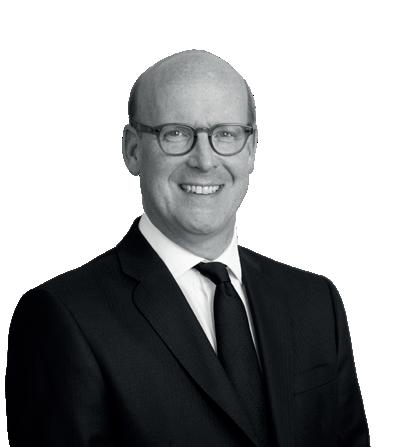
So not only can institutional PPAs play a unique role in Europe’s energy transition, but they can also play an important role in investor portfolios as a source of compelling and sustainable alpha with low risk through the unique approach we have pioneered.
Mortimer Menzel, Managing Partner, Augusta Investment Management


...not only can institutional PPAs play a unique role in Europe’s energy transition, but they can also play an important role in investor portfolios as a source of compelling and sustainable alpha with low risk...
Mortimer Menzel,

Before becoming a head-hunter 21yrs ago I had a brief period as a fund manager in the City, covering Emerging Market Debt and Currencies.
My boss was an avid commodity investor and as Gordon Brown was selling off the UK’s gold reserves, we, as contrarians, piled into junior gold stocks and bullion. I even remember driving up to Blackpool with a friend and buying 50 1kg silver bars for under $4 per/oz!…what a trade…I was hooked!
My real fascination, as it turned out, lay in wanting to know, meet and understand the people behind the prices and this drew me into Search in 2004 and has kept me occupied ever since.
Commodities as an asset class have caught the headlines in many ways over the last four years with huge price swings across the board driven by a
collision of competing, and often disruptive influences: post covid recovery, energy transition, Russia/Ukraine war, deglobalisation and the rise of power politics…to name but a few…manna to the trading community.
During this period, established integrated energy majors, private trading companies and hedge funds have all feasted on the resulting volatility, posting outsize returns not seen in living memory. Individual trading books making 5x, 10x and more of their normal annual returns were commonplace… as were the super-size bonuses and share awards… US$5m, US$10m and even US$50m + in some cases, or so we heard.
The forced relocation to the UAE of a huge swathe of the energy trading industry - the piece that was exposed to Russian energy flows and could not remain in Europe - added another layer to the story


The candidate market has loosened up significantly as actors refocus their businesses on the things they do best (or see greatest potential in) and cut away non-core trading teams and under-performing operations.
Philip Muir, EM Commodities

as companies relocated their teams and businesses or set-up overnight to market often heavily discounted molecules capturing generous margins.
As the headline grabbing returns drew in new players –hedge funds and Middle Eastern NOC’s in particular –trading talent pools were put under extreme pressure: in the UAE because specialist talent needed to be imported and more generally (across other centers) because of strong market wide growth.
Predictably the people who benefited the most have been the traders and their key lieutenants; either locked-in with sweetened retention packages or offered “too good to refuse” deals to move. A true “hire at any cost” mentality gripped the market during this period and pushed HR departments, leadership teams and boards to the limit as they battled to retain their top staff through enhanced incentive and retention schemes or struggled to match the inflated expectations of those they were trying to hire.
It is hard to say whether this hiring frenzy from actors new and old has paid off, but there is certainly a strong whiff that the cycle is now going through a more reflective phase as profits normalise.
Global politics and economics have rotated (as they always do) and a generation of commodity traders and leaders are retiring, grown fat on the spoils of these last few years. “Cost management” is certainly making a comeback and strategic thinking is now at a premium.
In recruitment terms that means the candidate market has loosened up significantly as companies refocus their businesses on the things they do
best (or see greatest potential in) and cut away noncore trading teams and under-performing operations.
Nat Gas and power trading (now globally interconnected) continues to attract the most interest from commercials and hedge funds alike as does the base metals sector (albeit at a smaller scale).
Oil, in all its forms (and historically the largest energy complex) remains more of a challenge for nonnative/non-asset/non-national players to enter so opportunities there (and there are some) tend to be more accessible to incumbents. Freight trading (wet and dry) enjoyed a huge boom over the last 3-4 yrs but is now approaching a cyclical low, likewise agricultural trading. The UAE… well, it seems clear the region is now firmly on the map for the long-run and whilst the talent market has cooled off quite markedly in the last 6-12 months it will no doubt tighten up again as politics and economics rotate once more.
Are we positive in terms of our business? I think yes... commodity cycles ebb and flow and value shifts around but thankfully for us there is always someone making money or changing up their business...if you know where to look!

Philip Muir, MD & Co-Founder, EM Commodities
EM Commodities is a boutique global Executive Search firm specialising in Senior level Trading, Commercial and Leadership roles in the physical Energy & Commodities space.
The business was founded in 2011 by Philip Muir (London) and Ravi Chawda (Houston) who together bring their clients over 40 years of specialist Executive Search experience in this sector.



Florence Broderick, Chief Revenue Officer, General Index
In the evolving world of commodities, data has become a critical driver of investment strategies.
As markets grow more interconnected and volatile, alternative investors are increasingly relying on real-time, transparent, and data-driven pricing to make informed decisions. The shift from traditional price-setting mechanisms to data-led approaches is reshaping how capital flows into commodities, improving efficiency, reducing risk, and unlocking new opportunities in investment portfolios.
Commodity prices have traditionally been influenced by a mix of supply and demand fundamentals, geopolitical events, and macroeconomic trends. Historically, price discovery depended on benchmarks set by a handful of established institutions. However, the rise of data analytics, alternative pricing mechanisms, and independent data providers has introduced a new level of accuracy and transparency.
With advancements in technology, high-frequency data collection enables real-time tracking of global
commodity movements, storage levels, and trading patterns. This granular data allows investors to gauge market sentiment more precisely, reducing the reliance on outdated or opaque pricing models. As a result, data-driven benchmarks are providing a more accurate reflection of real market conditions, improving decisionmaking for alternative investors.
For investment funds with exposure to commodities, the shift toward data-led pricing offers several advantages:
1. Improved Market Efficiency – Access to realtime and transparent pricing reduces information asymmetry, ensuring that commodity investments are based on the most current and comprehensive data available.
2. Better Risk Management – With greater pricing accuracy, funds can more effectively hedge against volatility. Sophisticated models incorporating real-time data allow for more dynamic risk assessment, helping investors


...data-driven benchmarks are providing a more accurate reflection of real market conditions, improving decisionmaking for alternative investors.
Florence Broderick, General Index



Independent
navigate periods of uncertainty.
3. Increased Liquidity – The adoption of data-led pricing encourages participation from a broader range of investors, including algorithmic traders and institutional funds that require robust pricing mechanisms to execute large-volume trades confidently.
4. Diversification Opportunities – More precise pricing facilitates the expansion of investment into less-traded commodities, unlocking new areas of opportunity for investors seeking differentiated returns within asset classes.
The emergence of independent pricing models has disrupted the traditional reliance on a few dominant benchmarks. Independent data providers leverage extensive market data to generate alternative price assessments, often reflecting actual transaction values rather than estimated pricing. This shift enables funds to trade commodities with greater confidence, knowing that their positions are based on real market activity rather than historical norms.
Additionally, the integration of machine learning and
artificial intelligence into pricing models has further refined commodity investment strategies. Algorithms can now analyze vast datasets, detect patterns, and predict price movements with increasing accuracy. As a result, investors who harness data-led pricing are gaining a competitive edge in navigating commodity markets.
As data-led pricing becomes the norm, the investment landscape in commodities will continue to evolve. Transparency and real-time information will drive more efficient capital allocation, while technological advancements will refine how funds approach risk and opportunity. Investors who adapt to this data-driven paradigm will be better positioned to capitalize on market shifts, ensuring that commodities remain a vital component of diversified alternative investment portfolios in the years ahead.

Florence Broderick, Chief Revenue Officer, General Index
www.general-index.com

Federico Vettore, Head of European Private Markets for Wealth, Morgan Stanley Investment Management
In the last several years, individual investors have increasingly embraced semi-liquid evergreen funds to access private markets investments for their portfolios. These funds tend to offer some of the same benefits as drawdown funds - namely, diversification and attractive returns - but with lower investment minimums, periodic liquidity and more efficient tax reporting. They do so without capital calls or upfront funding. Individual investor enthusiasm for these new structures have made it one of the fastest growing segments of the asset management industry. According to Pitchbook, in the United States. alone, net assets under management as of September 30, 2024 totalled $381 billion across 351 semi-liquid evergreen funds as of Q3 2024, with more than half of these
funds having been launched just in the last four years.
This trend toward broader access to alternative investments is also gaining ground in Europe. The current environment seems particularly supportive, as public budgets of many countries faces pressure and calls for greater involvement from private capital get louder. Asset managers are well-positioned to facilitate this channelling of private wealth into the real economy. There is strong alignment of interests among private investors, asset managers and the European regulators with the collective aim of driving the economy forward. Introduced in 2015, European Long-Term Investment Funds (ELTIFs) created a mechanism for private money to support long-term


The investment opportunities available in private markets dwarf those in the public markets, and this is reflected in investment flows.



The more recent introduction of ELTIF 2.0 has expanded the availability of these funds to a broader population of investors, further linking private assets to the modernisation of the European Union.
projects and the economy, providing investors access to non-traditional or private assets. The more recent introduction of ELTIF 2.0 has expanded the availability of these funds to a broader population of investors, further linking private assets to the modernisation of the European Union. At the same time, a wider pool of investors are looking to invest in private markets as a way to potentially achieve higher returns and to diversify away from public markets.
The investment opportunities available in private markets dwarf those in the public markets, and this is reflected in investment flows. Currently, private market assets globally amount to about USD 13 trillion. According to McKinsey’s Global Private Markets Review 2024, new capital inflows into the segment from private clients are expected to increase by about 1.5 trillion in 2025 alone. This is a remarkable figure, especially considering that most of the total assets in private markets today are held by institutional investors. To appreciate the potential global
growth, it’s worth noting that according to Preqin’s 2024 report Fundraising from Private Wealth 23% of U.S. high net worth investor portfolios are already invested in alternatives, of which 85% is in private markets. In Europe, by contrast, this percentage is just above zero.

The direction of growth is clear, but there remain important considerations for investors. Top among these are understanding that semi-liquid funds do not guarantee liquidity during times of market stress. Furthermore, the cash held in these funds to support a liquidity mechanism can dampen overall returns when compared to drawdown funds. Investors should pay close attention to the alignment of fee structures with manager incentives for cash management and
Federico Vettore, Head of European Private Markets for Wealth, Morgan Stanley Investment Management

Marianna Tothova, Partner, Dechert LLP
Over the past decade, democratisation of private assets or, retailisation, has been an important subject of discussion in the asset management industry. In mature markets such as the U.S., where there is a knowledgeable investor base used to manage their own assets on the financial markets, the BDCs have been a striking success.
EU policy makers agree that it is essential to unlock the EU savings channel to raise funds back into the economy and to finance, among others, EU businesses. The EU and UK also set out to create vehicles which would break the traditional divide between professional and retail investor products and enable retail and/or HNW investors to access private assets, through ELTIF and LTAF vehicles. While this success was rather limited at first, the recent changes to the ELTIF framework means there is a lot of potential for growth.
The policymakers’ interests align with those of the managers, private banks and private wealth distribution channels who are seeking to access (or invest) EU retail and HNW investors’ money.
For EU retail investors, the advantages are also obvious, such as further diversification and opportunities to include counter-cyclical assets (e.g. private credit) in retail investment portfolios. So why is it taking so long for retailisation to fully blossom in the EU? In addition to EU investors being rather conservative, the main issues seem to be liquidity and returns.
If managers decide to launch an open-ended fund, the asset liquidity, valuation and their alignment with investment strategy and redemption terms are major regulatory topics, which are now slowly settling in the context of semi-liquid and evergreen funds trends. Indeed, institutional investors are also increasingly


Managers can now... make closedended funds (such as retail ELTIFs or Luxembourg Part II funds) available to retail investors. This will cause fewer headaches when aligning the asset valuation and liquidity parameters...
Marianna Tothova, Partner, Dechert LLP

Interestingly, ELTIF 2.0 regulation provides a framework for managers to create a secondary market for ELTIF interests or units. However, we may need to wait for tokenization to unlock the full potential of access by retail investors to such funds.


looking to invest in funds with some regular liquidity, or funds which allow them to remain invested long term until they need to exit. However, any potential solutions in a regulated retail fund must also align with the detailed regulatory framework, which prescribes, in certain circumstances, holding of a certain portion of liquid assets (e.g. ELTIF) which will dilute the returns from private assets in the portfolio. This is a compromise that retail investors need to accept in return for regular liquidity.
Managers can now also make closedended funds (such as retail ELTIFs or Luxembourg Part II funds) available to retail investors. This will cause fewer headaches when aligning the asset valuation and liquidity parameters (e.g. if the fund is leveraged) and will allow investors to be fully exposed to private assets, however, retail investors may not be able to invest and block their savings for the

required period (typically 8-10 years). As a result, these vehicles may be currently suitable rather for HNW investors or the pension portion of retail investors' money. For these purposes, the development of secondary market options is crucial. While transfers of fund interests between professional investors and LPled secondaries are common, they are neither quick nor cheap options, making them inaccessible to retail investors. Interestingly, ELTIF 2.0 regulation provides a framework for managers to create a secondary market for ELTIF interests or units. However, we may need to wait for tokenization to unlock the full potential of access by retail investors to such funds.
Marianna Tothova, Partner, Dechert LLP



Some elements of infrastructure are meant to be more true cash flow - I would say lower risk because of the guaranteed cash flows, but it's a cash flow, high income yield generating part of the portfolio. You know, there's other parts of the infrastructure marketplace which are a little bit like private equity and that there may be some developments - a higher risk return opportunity to get to those guaranteed cash flows.
Michael Manning, CEO, NEPC


Tarun Nagpal, Founder & CEO, S64
Private markets, once the domain of institutional investors and 10-year closedend commitments, have opened to a broader audience of private wealth. Key to this transformation has been the rise of semi-liquid evergreen fund structures – perpetual private market funds with periodic liquidity windows. These innovative vehicles – including Europe’s updated ELTIF 2.0, the UCI Part II and the UK’s Long-Term Asset Fund (LTAF) to U.S. interval funds, non-traded BDCs, and REITs, are fundamentally changing how private wealth investors, and retail investors in particular, access alternatives. We are entering a new era in private markets – one marked by greater access, innovation, and collaboration.
The momentum behind semi-liquid evergreen funds is undeniable. Investors who were once dissuaded by illiquidity, large ticket sizes, and capital call
complexities are finding these new structures far more palatable. Over the past 5 years, the number of evergreen funds has nearly doubled to 520, representing at least $350bn of net asset value (Preqin).
This trend aligns with a broader industry movement towards democratisation. Currently, private investors represent nearly half of global wealth—estimated at over $140 trillion—yet account for only 16% of private markets' total assets under management, which currently stand at $13.1 trillion The runway for growth remains extensive, and semi-liquid evergreen funds are a crucial bridge to narrowing this gap.
Many in the wealth management channel have embraced the semi-liquid evergreen fund structure as their preferred private markets entry-point. Their open-ended nature means that capital can be deployed on day one and begin compounding sooner.


The momentum behind semi-liquid evergreen funds is undeniable. Investors who were once dissuaded by illiquidity, large ticket sizes, and capital call complexities are finding these new structures far more palatable.
Tarun Nagpal, S64

It is hard to find a private markets GP today that is not actively exploring the private wealth opportunity set and exploring the viability of launching a semi-liquid evergreen fund. For private wealth intermediaries and their clients there is now a comprehensive and growing menu of private assets in semi-liquid evergreen format. The market is populated with a diversity of opportunity across traditional strategies, multi-manager, multi-strategy and multi-asset semi-liquid funds. We have seen launches from GPs as diverse as Apollo, Ares, Hg, Macquarie and Vista. Private banks and wealth managers are now starting to manufacture their own internal semiliquid evergreen funds of funds as an alternative to traditional closed-ended vintage programmes.
Private markets GPs are becoming ever more creative in structure, liquidity management, and investment strategy to make these vehicles work for a broader investor base. Many semi-liquid evergreen funds maintain a liquidity “sleeve” – a portion in cash or public securities – to facilitate periodic redemptions. Often secondaries and co-investments are used to quickly deploy capital and reduce cash drag, ensuring that new inflows are put to work efficiently.
No revolution comes without challenges. Semi-liquid evergreen funds by nature combine features of openended and closed-ended funds, which introduces operational complexity. GPs and their service providers must master new processes: valuation of illiquid assets on a continual basis, managing subscriptions and redemptions, and handling liquidity mismatches. Combining liquid and illiquid components necessitates expertise ranging from establishing valuation procedures and NAV calculation frequency to implementing mechanisms such as gates and series. Onboarding investors into these funds can also be cumbersome today.
Regulatory complexities also persist, notably through country-by-country variations. Europe has taken a big leap with ELTIF 2.0, which provides a unified passport to market evergreen funds to retail investors across the EU, along with tax incentives
and a clearer rulebook. The UK introduced the LTAF, and the U.S. has long-standing semi-liquid structures – interval funds, tender offer funds, and non-traded BDCs REITs. Other regions are catching up: in Asia, markets like Hong Kong, Singapore and Australia are at the forefront of adopting evergreen fund offerings, while others are still developing the necessary distribution and regulatory ecosystem. These inconsistencies complicate efforts to distribute evergreen funds across multiple jurisdictions seamlessly.
Additionally, investor education remains a pressing issue. The term "semi-liquid" itself may inadvertently suggest more immediate liquidity than these structures realistically offer. Clear and consistent messaging is crucial to managing investor expectations, preventing mis-selling, and ensuring that participants fully understand the liquidity profiles and risks inherent in these funds.
This is where fintech solutions platforms such as S64 come into the equation, serving as outsourced product manufacturers and operations hubs, seamlessly integrating funds, private banks and fund administrators. Through standardized regulatory compliant workflows adaptive to cross-border regulatory regimes, fintechs are critical facilitators of scale and operational efficiency.
Despite these challenges, the trajectory of semiliquid evergreen is decidedly upwards. The reason for optimism is simple: these structures address a real need. They allow wealth managers and family offices to craft portfolios that include the return potential of private equity, private credit, real estate, and infrastructure without the severe liquidity lockups of the past. They allow successful GPs to expand their investor base and secure stable, longduration capital. And they create opportunities for individual investors (and their advisors) to benefit from institutional-quality assets and managers. In short, evergreen funds are central to the democratization of private markets – a theme that is only growing stronger.

Tarun Nagpal, Founder & CEO, S64

Matthew Podolsky, Vice President of Sales, Vistra
Retailization-the application of retail principles to industries beyond traditional retail-is reshaping global business models. The demand for seamless, intuitive, and highly personalized customer experiences is pushing companies in finance, healthcare, automotive, and real estate to rethink how they engage with their customers.
Once confined to retailers, concepts such as direct-toconsumer engagement, data-driven personalization, and omnichannel strategies are now being implemented in sectors historically dependent on intermediaries and long sales cycles. This evolution is not simply about selling more but about adopting a consumer-centric approach that enhances efficiency, responsiveness, and customer loyalty.
Several macro trends are accelerating the adoption of retail-inspired strategies across industries, and alternative investment funds are no exception. These funds are increasingly recognizing the need to shift toward retail-oriented models as they seek to engage a broader range of investors and meet evolving regulatory demands.
1.
In recent years, alternative investment funds have faced increasing pressure from retail investors who are looking for more accessible, transparent, and flexible investment options. These investors are not just high-net-worth individuals but are also from the growing middle market, eager for greater participation in assets like private equity, hedge funds, and real estate. Fund houses are now tasked with adapting their offerings to meet these demands, shifting away from traditional institutional-focused models to ones that are more accessible and user-friendly for retail investors.
2.
Recent regulatory shifts are also driving this change. As regulators create frameworks that
make it easier for retail investors to access alternative investment products, fund managers must ensure that they comply with these new rules while maintaining their competitive edge. This includes adapting internal processes, technology platforms, and investor communication strategies to comply with regulatory requirements while meeting the demand for more transparent and timely reporting.
3. Evolution of Fund Models
Fund houses traditionally servicing large institutional clients are now having to rethink their business models entirely. The complexity of managing retail funds requires a different level of attention to investor communication, data transparency, and digital access. This is not just about scaling up operations but about evolving operational practices to provide a level of service that meets the needs of a larger, more diverse investor base. Fund administrators accustomed to working with institutional investors may find themselves ill-prepared to handle the larger volumes, smaller individual investments, and more frequent transactions that come with a retail client base. As such, it’s critical for fund managers to partner with providers that have the expertise in servicing retail funds.
Furthermore, data accessibility and flexibility are becoming more important than ever. Fund houses must ensure that investors can easily access their data, whether they are deciding to remain invested or exit the fund. Clear strategies for data access and the eventual exit process must be in place to ensure that investors feel confident and informed throughout their investment journey.
For alternative funds moving into the retail space, it’s important to recognize the opportunities as well as the challenges. One major challenge is ensuring that fund administrators can handle the

complexity and volume of a retail fund. Retail funds are typically characterized by a higher volume of smaller investors, which can lead to a more laborintensive administrative process. Administrators used to work with large institutional clients may not be prepared for the operational demands of retail investors.
It’s vital for funds to work with administrators who not only understand the intricacies of retail investment strategies but also have the capacity to scale as the fund grows. Fund managers must also understand where they fit within the wider market. Are they catering to smaller investors, or is their fund likely to attract larger institutional investors as well? Understanding this dynamic is key to selecting the right administrative partner and ensuring a smooth transition to a more retail-focused model.
Retailization is a rapidly growing trend in the alternative investment world, with fund houses recognizing
the need to adjust their business models to cater to a wider investor base. This transition isn’t just about changing the type of investor a fund attracts but involves reevaluating the way fund managers think about investor experience, reporting transparency, and data accessibility.
As the alternative investment world evolves, the business models that support it must evolve as well. Fund managers must consider how they can remain competitive by embracing retailization and ensuring that their services meet the demands of both retail investors and regulatory bodies. Those that successfully transition to this new model will not only expand their investor base but also secure long-term growth in an increasingly retail-driven

Matthew Podolsky, Vice President of


This transition [to retailization] isn’t just about changing the type of investor a fund attracts but involves reevaluating the way fund managers think about investor experience, reporting transparency, and data accessibility.
Podolsky, Vistra

Over the past 25 years, the Cayman Islands have established themselves as a leading jurisdiction for alternative investment funds, with nearly 13,000 regulated open-ended funds and over 17,000 regulated closed-ended funds. As at the end of 2023, Cayman Islands registered investment funds had a combined net asset value of over US$8 trillion.
The dominance of the Cayman Islands in the offshore funds market is due to a combination of its tax neutrality, proximity to the United States and bespoke fund legislation and regulatory regime that have continuously evolved to meet market demands. Additionally, the jurisdiction’s appeal as a stable British
dependency with a judicial system underpinned by English common law is fundamental.
Tax neutrality is one of the most significant advantages.
The jurisdiction does not impose corporate, income, capital gains or withholding taxes on investment funds or their investors. Consequently, investors can manage their tax obligations in their country of tax residence and are not subject to multiple layers of taxation.
The Cayman Islands are dedicated to upholding the highest international standards and practices, including compliance with the OECD's common reporting standard and the requirements set by the Financial Action Task Force. The jurisdiction has also established a comprehensive legislative framework to combat


The dominance of the Cayman Islands in the offshore funds market is due to a combination of its tax neutrality, proximity to the United States and bespoke fund legislation and regulatory regime that have continuously evolved to meet market demands.
Emily

As at the end of 2023, Cayman Islands registered investment funds had a combined net asset value of over US$8 trillion.


money laundering, terrorist financing and proliferation financing. These robust regulatory measures enhance investor confidence, making the Cayman Islands an attractive jurisdiction for both investors and fund managers.
Most investment funds in the Cayman Islands are regulated by the Cayman Islands Monetary Authority ("CIMA"), which issues rules and guidance to regulated funds to ensure compliance with global standards while maintaining a business-friendly environment.
CIMA's aim is to achieve a sound financial system for the Cayman Islands that meets international standards and supports sustainable growth, development and resilience. The jurisdiction provides a flexible framework for investment managers underpinned by rules and guidance that require specific disclosures to investors, ensuring funds operate within a solid legal structure that protects investors while allowing flexibility for innovative fund structures.
Various entities can be used to structure investment funds, including: (i) exempted companies; (ii) exempted limited partnerships; (iii) segregated portfolio companies; (iv) limited liability companies
and (v) unit trusts. Exempted companies and segregated portfolio companies are commonly used as open-ended funds, while closed-ended funds are typically structured as exempted limited partnerships. Limited liability companies are a relatively recent innovation, ideal for parallel funds that wish to replicate the terms of a US LLC; while unit trusts are primarily used for investors in particular jurisdictions where other types of vehicle suffer tax or regulatory disadvantages.

Given the number of investment funds established in the jurisdiction, there is a sophisticated network of professionals operating in the Cayman Islands including lawyers, accountants, auditors, administrators and fiduciary service providers ensuring that fund managers have access to expert
For all these reasons, the Cayman Islands remains a popular choice for investment funds.
Are you ready for an SEC examination?
For SEC-registered investment advisers, a mock audit isn’t just a precaution, it’s a strategic advantage.
RQC’s tailored compliance reviews and mock audits replicate the rigour of a real SEC inspection, helping firms uncover regulatory gaps before the regulator does.
Navigating Compliance, Accelerating Success. Stay proactive, not reactive. Learn more at rqcgroup.com




Alaina Danley, Country Head - Cayman Islands, Waystone
The Cayman Islands continues to be regarded as a benchmark among offshore fund jurisdictions, distinguished not only by the volume of funds but by its quality of governance, regulatory integrity and investor protections. The jurisdiction continues to lead standards in fund oversight, compliance and institutional quality services while remaining efficient and flexible.
Today, Cayman is home to over 30,000 of the world’s investment funds, including hedge funds, private equity, private credit funds and related structures. Cayman-domiciled funds are trusted by the elite of alternative investors and institutional LPs, including pension funds, sovereign wealth funds, insurance companies, endowments and foundations – all of which prioritize regulatory oversight and governance practices – as well as emerging market investors seeking transparency and security in crossborder investments. The jurisdiction understands that the integrity of its regulations and legislation, as well as the evolution of best practices in governance and regulatory compliance, are essential to maintaining investor confidence and facilitating efficient investment from an extensive global reach.

The jurisdiction has committed to a comprehensive framework that emphasizes oversight, accountability and independence. With the added efficiency of tax neutrality, Cayman legal entities of varying forms often seamlessly integrate within various multi-jurisdictional fund structures, providing unique distribution capabilities and competitive access to capital.
Sophisticated investment managers, institutional investors and family offices alike continue to choose Cayman for its strategic blend of reliability and global relevance for invested capital.
Alaina Danley, Waystone
Funds that can demonstrate robust governance practices are increasingly able to fast-track through due diligence, while limited oversight often delays or disqualifies funds from competitive institutional mandates. Cayman has made governance a central pillar of its ongoing success by responding to investor expectations and efficiently developing best practices amid the wave of regulatory evolution.
A trending observation following the recent implementation of a new set of Rules and Statements of Guidance by the Cayman Islands Monetary Authority (CIMA) in 2023 – concerning corporate governance and internal controls – is that for funds operating within the regulated environment of the Mutual Funds Act (and the corresponding Statement of Guidance in place since 2014), most are already practicing effective oversight and have had to make limited enhancements to formalize these practices within written governance frameworks and enhanced Board selfassessment criteria. For certain private fund structures, regulation by CIMA has been
as recent as the implementation of the Private Funds Act of 2020. For these structures, consideration has been actively given to enhanced delegate oversight and the prudent level of independence within varying structures of governing bodies and related frameworks.
Key governance enhancements, many of which have been leveraged from the hedge fund environment that institutional investors have been familiar with for over 20 years, include:
• Conflicts of interest management: The governing bodies of funds, general partners and investment managers must demonstrate processes to identify, disclose, and mitigate conflicts, aligning with established policies and international best practices.



Funds that can demonstrate robust governance practices are increasingly able to fast-track through due diligence, while limited oversight often delays or disqualifies funds from competitive institutional mandates.
• Valuation independence: Valuation policies must be clearly outlined, including an appropriate level of independent verification of asset values, particularly in illiquid or hard-to-value positions.
• Auditor and administrator oversight: Cayman mandates the appointment of approved auditors and encourages independent fund administration to ensure proper NAV calculation and reporting as well as third-party cash monitoring and adherence to segregation of assets policies.
• Board/General Partner governance practices: Funds and their operators must hold regular board meetings with documented minutes and with an agenda that includes the review of service providers, offering terms and regulatory compliance obligations.
• Regulatory compliance monitoring: Funds are now directly responsible for a myriad of entity-level regulatory compliance obligations, distinct from the obligations falling solely to their regulated Advisor or Investment Manager, including but not limited to relevant CIMA Acts and Rules, AML/ KYC and FATCA/CRS regulations, Beneficial Ownership and Economic Substance legislation.
The Cayman Islands will not stand still as a jurisdiction or among its associations of
investment fund service professionals. Cayman is at the forefront of evolving capabilities across diversified asset classes and fund structuring innovation, including:
• Structures supporting hybrid and evergreen strategies for long-term capital.
• Tokenized fund vehicles and blockchain-related structures, building on the growth of registered digital asset funds.
• Investments in insurance-linked securities as well as insurance and reinsurance companies.
Sophisticated investment managers, institutional investors and family offices alike continue to choose Cayman for its strategic blend of reliability and global relevance for invested capital. As the global funds landscape evolves, Cayman remains focused on transparent, experienced, accountable and innovative service provision to a growing number of funds and related investment structures all of which not only leverage, but trust the jurisdiction for its security in law, audit, regulatory compliance and independent fund governance.
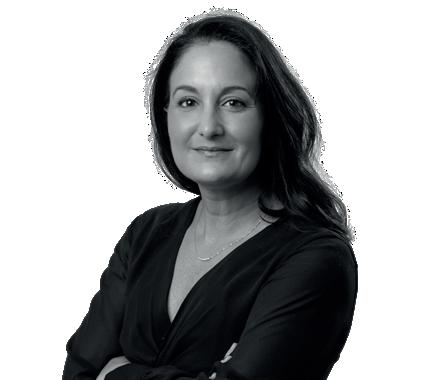
Alaina Danley, Country HeadCayman Islands, Waystone
Waystone is a leading global provider of institutional governance, administration, risk and compliance services to the asset management industry. www.waystone.com

The Cayman Islands is often cited as the leading jurisdiction for offshore private funds— but what do the numbers say?
According to the latest report from the SEC’s Division of Investment Management Analytics Office, as of Q3 2024, a remarkable 31.7% of the net assets of all private funds globally are held in Cayman Islandsdomiciled vehicles. For perspective, the next closest offshore jurisdictions are Luxembourg with 5.0%, Ireland with 3.2%, and Bermuda with 1.1%, illustrating just how influential the Cayman Islands remains in the offshore private fund landscape.
In addition, statistics published by the Cayman Islands Monetary Authority (CIMA) confirm that, as of Q1 2025, there were 17,376 registered private funds in the jurisdiction, representing a 36.8% increase over the past five years. This figure contributes to a broader total of more than 30,000 registered funds, reinforcing Cayman’s role as a global
powerhouse for fund structuring.
These numbers tell a clear story: the Cayman Islands continues to be the premier destination for offshore private fund formation.
The continued dominance of the Cayman Islands’ is driven by a combination of key advantages:

Experienced Service Providers: A wellestablished network of legal, accounting, governance, and administrative professionals supports efficient fund formation and ongoing
Global Investor Familiarity: Institutional investors are highly familiar with Cayman structures, which can accelerate due diligence and help streamline capital raising efforts for fund managers.
Tax Neutrality: Cayman’s taxneutral status facilitates efficient cross-border investing without adding an extra layer of taxation.


Institutional investors are highly familiar with Cayman structures, which can accelerate due diligence and help streamline capital raising efforts for fund managers.

Strong but Practical Regulation: The jurisdiction has a robust regulatory framework, while maintaining a business-friendly environment.
Flexible Fund Structures: A range of vehicles offers fund managers the flexibility to meet investor needs.
The Cayman Islands private funds industry has shown resilience and adaptability in the face of global regulatory change. As transparency, ESG considerations, and investor due diligence become more critical, Cayman continues to enhance its compliance infrastructure while maintaining its core strengths: flexibility, neutrality, and legal certainty.
There is also growing interest in emerging fund strategies, including private credit, digital assets, and ESG-focused funds—all of which are well-supported by Cayman’s modern legal and regulatory frameworks.
Establishing a Cayman Islandsdomiciled investment fund provides confidence and predictability for
both fund managers and investors. This combination of stability, credibility, and choice underpins the jurisdiction’s continued success.
With a strong foundation, forward-looking regulation, and an unparalleled ecosystem of expertise, the Cayman Islands is well-positioned to maintain its leadership in offshore private fund formation—now and in the years to come.
Greg O’Driscoll, Partner & Head of Asset Management, and Denis Collins, Senior Manager,



As transparency, ESG considerations, and investor due diligence become more critical, Cayman continues to enhance its compliance infrastructure while maintaining its core strengths: flexibility, neutrality, and legal certainty.
Greg O’Driscoll, Denis Collins, Grant Thornton

Private markets are entering a new era, marked by a decisive shift away from traditional blind-pool investing toward more agile, transparent, and collaborative models. At the center of this evolution is the rise of direct investing and co-investment structures, and increasingly, the jurisdiction making it all possible is the Cayman Islands.
Family offices, in particular, are leading this transformation. With a long-term investment horizon, operational know-how, and a growing appetite for control, they are opting out of conventional fund models in favor of more tailored, purpose-aligned opportunities. Direct investing allows them to select specific deals, partner closely with founders, and target sectors that align with their values and vision. Whether it's healthcare innovation, frontier technologies like AI, quantum computing, or
sustainable infrastructure, family offices want strategic exposure.
Facilitating this shift are Cayman’s co-investment structures. From Exempted Limited Partnerships (ELPs) to Limited Liability Companies (LLCs) and Segregated Portfolio Companies (SPCs), Cayman offers a menu of flexible, internationally recognized vehicles that cater to the bespoke needs of family offices. These structures are not only familiar to global LPs but also support efficient capital calls, tailored governance, and tax neutrality, critical features for cross-border dealmaking.
ELPs remain the most popular choice for private equity-style co-investments, offering clear alignment between general partners and limited partners through customizable waterfalls and profit-sharing mechanisms. LLCs provide contractual freedom and


ELPs remain the most popular choice for private equity-style co-investments, offering clear alignment between general partners and limited partners through customizable waterfalls and profit-sharing mechanisms.
Amin Naj, FundFront

a governance model that aligns closely with U.S. practices, making them ideal for joint ventures and hybrid strategies. SPCs, on the other hand, offer asset and liability segregation within a single entity, often appealing for multi-asset or multi-strategy vehicles.
Cayman provides the legal frameworks and the institutional ecosystem to execute these types of club deals efficiently, whether alongside GPs or independently. Its robust service provider ecosystem, with leading fund administrators, legal advisors, and auditors, ensures that complex structures can be managed with the same rigor and professionalism as any top-tier fund jurisdiction.
Equally important is Cayman’s regulatory environment. Under the Cayman Islands Private Funds Act, co-investment vehicles benefit from an appropriate level of oversight while retaining operational agility. This makes the jurisdiction especially attractive for structures
that need to balance regulatory rigor with speed and flexibility.
As private markets evolve and investors demand more alignment, transparency, and strategic control, Cayman stands out as the jurisdiction best positioned to support the next decade of private market activities. For family offices, it enables a move from passive allocator to active participant, bringing not just capital but conviction, expertise, and long-term partnership to the table. Those who embrace this shift and engage family offices as strategic partners will be best positioned to raise long-term capital, build trust, and win in an increasingly relationship-driven market.

Amin Naj is a family office advisor, investor, and entrepreneur with two decades of experience across investment management, hedge funds, and family offices.
FundFront provides tailored offshore wealth structuring and administration for family offices and boutique investment firms, with expertise in fund setups, corporate structures, and securitization.


As private markets evolve and investors demand more alignment, transparency, and strategic control, Cayman stands out as the jurisdiction best positioned to support the next decade of private market activities.

Leanne Golding, Director, Harbour
As investors expand their search for alpha and seek returns in less liquid strategies - like private equity, private credit, venture capital, and real estate - closed-ended investment funds are increasingly popular. Alongside this shift, regulators and investors alike are demanding enhanced fund governance, pushing for higher standards across all fund structures.
All funds regulated under the Cayman Islands Mutual Funds Act or Private Funds Act must comply with the Cayman Islands Monetary Authority’s (CIMA) Statement of Guidance (SOG) and Rule on Corporate Governance. While the SOG offers guidance, the Rule imposes binding obligations, with CIMA empowered to penalize breaches.
Closed-ended funds structured as Cayman Islands

limited partnerships fall under the Private Funds Act. Their general partners are responsible for complying with the SOG and other CIMA requirements, regardless of their location. Many U.S.-based managers use Delaware-domiciled entities as general partners for their Cayman funds, and those general partners typically do not have non-executive independent directors. Historically, governance for limited partnerships has lagged behind that of corporate funds, but regulations now mandate improvements.
Institutional investors are not only increasing allocations to private equity and credit funds but are also bringing with them expectations formed in the hedge fund space: independent administration, external valuation, cash controls, and especially governance. The lack of external representation on general partners can create conflicts of interest and governance gaps.

All funds regulated under the Cayman Islands Mutual Funds Act or Private Funds Act must comply with the Cayman Islands Monetary Authority’s Statement of Guidance and Rule on Corporate Governance.
Leanne Golding, Harbour



Incorporating independent governance - either through general partner boards or Advisory Committees/Boards - ensures compliance, builds investor trust, and supports operational excellence.
Leanne Golding, Harbour
As more pension funds, high-net-worth individuals, and institutional allocators invest into these private funds, expectations for transparent and aligned governance structures are intensifying.
Independent non-executive directors provide essential and valuable oversight, reduce operational risk, mitigate conflicts of interest, and free up managers to focus on core fund activities. These independent nonexecutive directors ensure robust policies are in place around expense allocation, conflicts, and valuations. They help assure investors that co-investment opportunities and fund activities are fairly managed.
Best practice is to appoint a majority of independent non-executive directors on the board of the general partner. However, another viable solution to attain independent general partner representation are Advisory Committees/Boards - comprised of independent non-executive members. These committees typically approve significant decisions, such as changes in strategy, service providers, or fund wind-downs.
Once in place, an Advisory Committee/Board will provide enhanced investor confidence and improved regulatory
compliance. The governance framework will lower operational risk and improve conflict management. And an added bonus is access to experienced, objective advisors.
Incorporating independent governance - either through general partner boards or Advisory Committees/ Boards - ensures compliance, builds investor trust, and supports operational excellence. The valueadd proposition to a private equity or private credit fund is significant and can be achieved with minimal operational burden or cost.
Leanne Golding, Director, Harbour

The Harbour Trust Co. Ltd. (“Harbour Trust”) and HTC Fiduciary Services Limited (“HTC” and together with Harbour Trust doing business as “Harbour”) specialize in the provision of directorship and related fund fiduciary services, and have a long standing and well established presence in the fund industry. Leanne Golding is a Director at Harbour and is responsible for providing fiduciary services to Harbour’s fund clients, including serving as an independent director for such funds.

Vasily Andreev, CEO and co-Founder, Temple Capital
If you could go back to Wall Street in the 1980s, with today’s data science toolkit, you would have a good chance of crushing the markets.
Back then, the “quirks” present in equity and commodity markets gave rise to the first generation of quant traders who, with primitive data and basic models, extracted extraordinary returns from strategies like simple trend-following.
While these traditional markets have matured and become increasing efficient, crypto markets, especially in perpetual futures on Bitcoin and Ethereum, offer a new type of alpha for systematic trading. Perpetual futures, or “perps”, are a uniquely crypto-native derivative that mimic futures but have no expiry. Instead, they use a funding mechanism to anchor their price to spot. Because they trade 24/7, with varying degrees of leverage and deep liquidity, they have become the dominant instrument for short-term positioning in digital assets.
Today, the data sets are vastly richer, the computational power has advanced light years, and the edge is with those who can systematically explore a much larger surface area of signals.
The inefficiencies present in cryptocurrency markets are partly a result of the diverse makeup of participants trading them. Unlike traditional markets, where access to venues like the Chicago Mercantile Exchange (CME) has historically been limited to institutions and hedge funds, the crypto market is far more accessible. It draws a wide range of investors, from highly secretive, underthe-radar firms, executing billions of dollars daily in high-frequency trades with advanced low-latency technology, to individual punters operating with minimal infrastructure and resources.
Importantly, a parallel crypto derivatives ecosystem has emerged outside of traditional finance (TradFi) frameworks, led by offshore centralized exchanges, such as OKX, Binance

... crypto markets, especially in perpetual futures on Bitcoin and Ethereum, offer a new type of alpha for systematic trading.
Vasily Andreev, Temple Capital





That edge isn’t in simple moving averages or price momentum anymore but in the process of discovering signals across many dimensions and extracting nonlinear relationships across massive feature sets...
and Coinbase International. These venues operate continuously, enabling around-the-clock trading along with a level of accessibility, composability, and innovation that does not yet exist in TradFi.
The always-on nature of cryptocurrency trading is a data scientist’s dream. Continuous trading provides deep time series with no gaps - no weekends, no holidays, no market opens or closes. This uninterrupted stream of tick, volume, order book, and on-chain data is invaluable for signal discovery.
With modern computer science and infrastructure, this data can be ingested and transformed into tens of thousands of features, including technical, statistical, behavioural, cross-asset, or even blockchain-native indicators like gas usage or miner flows. It allows for faster iteration, deeper statistical confidence, and real-time signal evolution.
The data alone gives systematic strategies an edge, but only if you have the right models and systems to harness it. That edge isn’t in simple moving averages or price momentum anymore but in the process of discovering signals across many dimensions and extracting nonlinear relationships across massive feature sets.
This is a return to the early days of quantitative finance, except now we have better data and better machines - which is mission-critical as the alpha is evolving more rapidly. Those who can build fast, iterate faster, and model higherdimensional spaces in a systematic and scientific way, will dominate
Vasily Andreev, CEO and co-founder, Temple Capital
Founded in 2018, Temple is a fully systematic hedge fund firm focussed on trading Bitcoin and Ethereum. Temple has assets under management of $130m and its 6-year live fund track record exhibits high levels of alpha, high risk-adjusted returns and no correlation to Bitcoin, Ethereum, S&P and other trading strategies. Temple's team of 16 senior investment professional is committed to excellence in systematic alpha capture, operational resilience and building long-term client partnerships. The firm is GP-backed by Bain Capital, Pantera and Belvedere Trading.

Ilan Solot, Senior Global Markets Strategist, Marex Solutions
Bitcoin has recently surged to a new all-time high above $111,000. That headline alone speaks volumes: Crypto is no longer on the fringe - it’s now part of the normal financial discourse amongst asset managers and the media. The asset class that was once dismissed as speculative has not only weathered multiple cycles of volatility but has emerged stronger, with deeper liquidity, institutional credibility, and expanding use cases.
At the core is a maturing asset class that now includes spot ETFs, regulated custody, and transparent derivatives markets. U.S.-listed Bitcoin ETFs have been one of the most successful ETF products ever. And demand has come from a wide range of investors, including asset managers, family offices, and even sovereign entities. President Trump's recent executive order to create a Strategic Bitcoin Reserve and the stable coin bills currently in Congress adds to the narrative and commitment by the U.S. administration to continue integrating digital assets into the financial system.
But adoption isn’t only about headlines. Beneath the surface, we’re witnessing a convergence of traditional finance (TradFi) and decentralized finance (DeFi).

Legacy players like BlackRock and Fidelity are building crypto rails, banks are issuing tokenised assets, and treasuries are beginning to diversify with digital components.
Mindful that investors are seeking ways to participate in this new opportunity, while mitigating its characteristic volatility and other crypto market challenges, the question for institutional allocators is no longer "Should we be in crypto?" but "What’s the best framework and products for allocation?"
As institutional investors increasingly treat crypto as an alternative asset class with distinct properties, a compelling route to accessing this new investment opportunity is the creation of crypto asset-linked structured products that leverage crypto asset performance potential, while mitigating market volatility and other crypto-native challenges.
WisdomTree’s partnership with Marex underscores this shift towards more accessible and risk-conscious crypto investing. The collaboration focuses on ETPlinked structured notes - financial instruments that tie the payout to the performance of WisdomTree’s regulated cryptocurrency exchange-traded products (ETPs). These ETPs serve as the underlying assets
The fusion of structured product design with crypto asset exposure is a crucial step in the professionalisation and investability of the digital asset landscape.
Ilan Solot, Marex Solutions




...the question for institutional allocators is no longer “Should we be in crypto?” but “What’s the best framework and products for allocation?
Ilan


for Marex’s structured solutions, combining the transparency and liquidity of listed vehicles with Marex’s structuring expertise and robust balance sheet.
The menu of ways to engage with crypto has grown impressively broad:
Bitcoin, in particular, is viewed by many as a digital alternative to gold, with scarcity and decentralisation at its core, and growing appeal in an environment of fiscal strain and sovereign credit downgrades. Other routes include:
• Spot ETFs and ETPs for transparent, liquid access
• Derivatives for hedging and tactical positioning
• Custodied direct holdings for long-term conviction plays
• Tokenized strategies combining digital and traditional asset exposure
• Structured products and notes, offering yield, hedging and multi-asset baskets
The fusion of structured product design with crypto asset exposure is a crucial step in the professionalisation and investability of the digital asset landscape, embedding crypto in portfolios without taking on full directional
risk, critical for wealth managers, pension funds, and endowments exploring the space.
The lines between crypto and traditional finance are blurring fast. Institutional infrastructure is in place. Regulatory clarity is improving. And with Bitcoin at new highs and policy tailwinds accelerating, digital assets are no longer just an experiment; they’re a new investment frontier.
Decoding crypto today means understanding its dual identity: A volatile asset class with high upside, and a maturing system that’s reshaping how capital flows

Structured products in particular provide a valuable bridge between TradFi and DeFi solutions. By wrapping digital assets within notes that feature conventional risk control elements such as principal protection, capital barriers, or conditional coupons, investors can gain exposure to the crypto market with defined downside buffers - an increasingly compelling proposition in today’s risk-conscious investment climate.
Ilan Solot, Senior Global Markets Strategist,
For more on Marex Solutions' digital asset offering, you

Louis LaValle, Co-Founder & CEO, Frontier
Over the past five years, I’ve met hundreds of crypto hedge fund managers. The talent is real. What’s missing is the infrastructure to support it. Until that changes, most of the industry will remain subscale - and structurally offlimits to institutional capital.
The data backs it up: more than 80% of crypto hedge funds manage under $50 million. Fewer than one in twenty exceed $500 million. Even as median fund size grows, it remains below the floor where most allocators begin engagement. The ceiling is especially visible among market-neutral and fundamental strategies, where median AUM hovers around $25–30 million - outside the range of serious allocator interest.
To put it bluntly: the problem isn’t alpha. It’s structure - and culture.
In traditional asset management, institutional readiness means infrastructure and governance. In crypto, those elements are often absent or misunderstood. Post-FTX, the bar is higher: segregated custody, SOC-2 audits, independent attestations, real-time controls. But most managers fall short. For a fund under $50 million, simply being compliant can cost hundreds of basis points annually. That math doesn’t scale.
And that’s just the surface.
Most managers fail basic operational due diligence. Across hundreds of meetings, I’ve yet to see a single GIPS-compliant track record. Governance and controls often break down under scrutiny. Policies may exist - but enforcement is inconsistent at best. Allocators don’t fund intentions. They fund execution.


In traditional asset management, institutional readiness means infrastructure and governance. In crypto, those elements are often absent or misunderstood.
Louis LaValle, Frontier

Culture is part of the issue. In traditional finance, a culture of compliance is expected. In crypto, it’s often treated as a constraint. But for fiduciaries, compliance isn’t optional - it’s the threshold. That includes personal trading policies, pre-clearance, codes of ethics, and enforceable oversight. These aren’t “nice to have” - they’re table stakes. Infrastructure gaps deepen the divide. There’s no central clearing for spot, no crossvenue margining, no standardized collateral management. Most trades are bilateral and prefunded—trapping capital, over-collateralizing risk, increasing counterparty exposure. No consolidated tape. No unified credit. No institutional-grade settlement rails. For fiduciaries, that’s a hard stop.
Tri-party custody offers some reliefbut not enough. In traditional markets, collateral stays with a neutral custodian while risk and execution remain external. That enables margin efficiency, real oversight, and yield on idle cash. In crypto, adoption is still fragmented. Without scale, most managers remain operationally sub-institutional - regardless of
strategy or Sharpe.
Prime brokerage isn’t much better. A few non-bank players extend credit selectively, but capacity remains thin. Even risk-controlled strategies - basis trades, BTC overwrites, term lendingstruggle to scale without infrastructure to support leverage, netting, and execution at size.
The result is a two-tier market. A few headline managers attract capital. The rest stall - not due to lack of skill or competitive edge, but because the system isn’t built to support them.

What breaks the ceiling?
Not another bull market. It breaks with infrastructure. This industry doesn’t need more investment innovation - it needs integration: operations, credit, clearing, compliance - all built for institutional
Talent isn’t the constraint. Trust is. And trust requires structure. Until that exists, scale will remain the exception - not the rule.
Louis
LaValle, Co-Founder & CEO, Frontier


This industry doesn’t need more investment innovation - it needs integration: operations, credit, clearing, compliance - all built for institutional scale.
Louis LaValle, Frontier

Vin Molino, COO & Head of ODD, Crypto Insights Group Corp
Bitcoin is moving up, regulatory obstacles appear to be moving down, but the experience of digital asset investing can still be disorientating. For those who have dreamed of being an astronaut, the term for when a spacecraft is spinning in all directions, and a pilot needs to reorientate the ship, is called Attitude Control. It’s likely a relatable experience for institutional investors already allocated to crypto investments or having just completed their lift off.
The current marketplace for crypto investment products now offers a number of “flight path” options to consider when building a crypto allocation.
There are venture funds, for which many institutions used as their initial approach in the 2018 - 2022 (pre-FTX) time period, and remain as a common means when bucketing crypto as an emerging technology. In addition, hedge funds, some of which began meaningfully trading crypto as far back as 2017, have been a way for investors to take advantage of the volatility and velocity of the liquid token space. While ETPs, and U.S. ETFs (since early 2024), have provided a constellation of choices for regulated products or initial exposure.
Lastly, there remains the new frontier of cryptoyield products, financial instruments (i.e., options

and perpetual futures), and other soon-to-be launched blockchain enabled structures.
Whichever form of crypto propulsion an institutional investor chooses to complete their mission, one still needs the right instruments to get there.
A common issue that arises for investors attempting to coordinate their digital asset allocations is not having appropriate assessment tools for crypto investment returns.
Using traditional financial benchmarks, such as those for equity or fixed income investing, might at first appear to be the logical support systems when considering the characteristics of certain crypto products, but quickly stall as one understands how the underlying constituents of most crypto portfolios derive their returns, pricing and valuations, from a new array of measurements.
Fortunately, there has been development in crypto index creation over recent years, which can be used to navigate through individual products amongst a peer-set, or used to calculate the relative performance of an allocator’s crypto cohort. Examples of such new indices have been

Whichever form of crypto propulsion an institutional investor chooses to complete their mission, one still needs the right instruments to get there.
Vin Molino, Crypto Insights Group Corp



...mission critical features of a crypto fund database should include scale of strategy coverage, timeliness of performance reporting, and indications of a fund manager’s operational readiness.
provided by traditional players such as S&P and MSCI, as they realize the momentum shift towards institutional adoption, and crypto-native providers such as CoinDesk, MarketVector and CF Benchmarks, who have developed benchmark offerings with hundreds of linked products.
Not just the name of a Star Trek character; Data, as in all professional investing, is a critical component for achieving success in the mission of digital asset management.
As has been established in the traditional fund space, database providers of all sorts exist to provide information and analytics when assessing private investments, such as private equity and private credit, while mutual funds and ETFs can be easily researched using publicly available internet tools.
It should come as no surprise that seeking a centralized crypto information repository is challenging, as many of the traditional players have not prioritized digital asset coverage. However, due to increasing institutional allocator product research, and crypto fund managers not having formal capital introduction and placement agent offerings (many crypto brokers don’t offer such services), platforms, such as Crypto Insights Group, are now available
for investors seeking crypto offerings, with the same portfolio analytics they are accustomed to for traditional funds.
Recently working as a former crypto allocator (having helped manage a crypto fund of funds), mission critical features of a crypto fund database should include scale of strategy coverage, timeliness of performance reporting, and indications of a fund manager’s operational readiness.
Just as astronauts have to undergo months of training and conditioning to prepare for their journeys, institutional allocators need to do the same for exploring the crypto space.

Although there may be times of feeling the g-force of crypto investing on an institutional portfolio, via the volatility of the asset class, or lack of proper exposure, it is always important to remember to trust your instruments to get your allocation back on track.
So aim your thrusters towards the opportunity in digital assets, and be light years ahead in the future of

Ruud Smets, Managing Partner & CIO, Theta Capital
In investing, some windows only open once. By the time a transformational technology reaches public consensus, the asymmetry is gone. The early internet, mobile communications, and cloud computing all passed through periods of underestimation. Protocols like TCP/IP and mobile networks were once considered niche or impractical - until they became the invisible rails of modern life.
Blockchain today stands at a similar inflection point. As we highlight in our industry outlook The Satellite View, we’re in what we call the “zero-to-one” moment: when foundational rails are being laid - decentralized finance (DeFi) protocols, zero-knowledge cryptography, real-world asset tokenization, Ethereum scaling layers. As a result, global adoption curves are steepening, but institutional capital hasn’t yet priced in the full scope of the shift. This phase is uniquely high in asymmetry
and low in visibility. By the time scaling kicks in and the narrative becomes obvious, the edge is already gone.
Historical parallels abound. In the 1990s, most analysts failed to predict that mobile phone adoption would exceed 10% of the global population. By the time smartphones took off, the foundational bets had already been made. Likewise, the early internet’s base layer protocols were not broadly understood. It was only years later that applications like e-commerce and social media made the infrastructure visible. We believe blockchain technology is now in that foundational stage. The numbers tell the story. Blockchain adoption is projected to reach 1 to 1.5 billion users by 2030 - a pace that would outstrip the early internet, with multiple sources confirming this growth trajectory. Crypto-native VCs now fund 95% of the most promising blockchain projects, while


As a professional investor, you only get to enter during the zero-to-one moment once. This is where early-stage conviction meets generational opportunity.
Ruud Smets, Theta Capital

We believe blockchain technology is now in that foundational stage. The numbers tell the story. Blockchain adoption is projected to reach 1 to 1.5 billion users by 2030...
Ruud Smets, Theta Capital

generalist funds remain on the sidelines. Venture cycles move at 10x the speed of traditional finance, with liquidity arriving in just 3–3.5 years, rather than a decade.
But this isn’t just about timing. It’s about access. Most institutional investors can’t enter this phase directly. Generalist venture firms often lack the technical fluency, local intelligence, or network to operate in crypto’s high-velocity terrain. That’s why specialized venture managers and fund-of-funds structures like Theta Blockchain Ventures are critical—offering curated exposure across managers, verticals, and stages, and capturing the structural upside without relying on single bets. Specialized structures are needed to reach where most institutions can’t go directly - and that access is where the asymmetry lives.
This upside isn’t abstract. It’s visible today across high-impact verticals. Maturing DeFi protocols and stablecoins, which are the most succesful blockchain application to date with an annualized transaction volume of $16trn (surpassing VISA’s!), are building an open, programmable capital market layer for the internet. In the emerging field of DePIN—the acronym for decentralized physical infrastructure
networks - startups are turning energy generation and infrastructure into tokenized, distributed networks. At the intersection of AI x Crypto token-incentivized ecosystems are coordinating compute and data through decentralized marketplaces. These are not speculative trends. They are the emerging base layer of the next internet. Or rather, the scaffolding of a true internet economy
What unites all of this is timing. As a professional investor, you only get to enter during the zero-to-one moment once. This is where early-stage conviction meets generational opportunity. The historical pattern is clear: the internet, mobile, cloud—those who saw the early asymmetries and positioned early captured generational wealth. Those who waited arrived late, when the riskreward profile had fundamentally shifted.

Today, blockchain offers the same kind of moment. But the window may be narrow, and the market is moving fast.
Ruud Smets, Managing Partner & CIO,
To
learn more about blockchain VC from the industry’s leading investors and founders visit The Satellite View

Daphne Huang, Head of BD & Operations, Definitive Finance
As digital assets mature, a new frontier of opportunity has emerged in decentralized finance (DeFi), where sophisticated players are able to capture outsized returns. Alpha is now greatest in DeFi markets, with many new token assets launching and trading billions in volume onchain before ever being listed in Centralized Finance (CeFi).
Permissionless DeFi token issuance has ushered in a new era of capital formation. In contrast to the limited set of investable assets on CeFi, DeFi now hosts thousands of tokens ranging from tokenized real-world assets (RWAs) to consumer apps. For hedge funds seeking Bitcoin benchmark outperformance, this proliferation presents massive opportunities.
In CeFi, tokens undergo an often months-long listing process before they’re available for trading. By then,
the initial price discovery, and alpha, have already passed. DeFi presents an alternative path, making it fast and frictionless for teams to launch a token. Onchain, projects can deploy a token contract, seed a liquidity pool on Uniswap or other automated market maker (AMM) platforms, and open these pools to global liquidity within hours, leading to more tokens launching onchain first. The gap between onchain debut and CeFi listing often represents a structural alpha window.
Maple Finance, an institutional credit protocol and prominent DeFi project, introduced its token, $SYRUP, in November 2024 on the Ethereum blockchain. Initial liquidity pools priced $SYRUP at approximately $0.12 per token. In May 2025, over five months after its DeFi debut, Binance was the first major centralized exchange to list $SYRUP at $0.35, representing a 190% potential gain for DeFi traders.


Alpha is now greatest in DeFi markets, with many new token assets launching and trading billions in volume onchain before ever being listed in Centralized Finance (CeFi).
Daphne

$LAUNCHCOIN by Believe App
The native token of Believe App, a modern-day Kickstarter platform, traded on Solana-based DEXs at an all-time low of $0.00018 in March 2025.
$LAUNCHCOIN was first listed on centralized exchange Gate.io on May 16, 2025 at $0.17 per token, and is still not available to trade on major U.S. exchanges like Coinbase as of this writing.
The $TRUMP Memecoin
Donald Trump’s official memecoin, $TRUMP, launched on January 17, 2025 on Solana at ~$1.21.
Due to Trump’s prominence, it was quickly picked up by several CeFi exchanges on January 18, 2025, just one day after its DeFi launch. However, even in this short (and volatile) period, CeFi listing prices were significantly higher, ranging from ~$4 to ~$14.
Despite the plethora of opportunities, trading in DeFi requires nuanced knowledge. Sifting through the growing universe of onchain projects is daunting, but various onchain data services can help funds research and identify tokens with
robust fundamentals. Onchain trade execution also presents challenges, from avoiding MEV attacks where sophisticated bots detect and exploit pending trades, to understanding how to produce post-trade PnLs from blockchain data. DeFi trading tools must be carefully evaluated, as most lack institutionalgrade support, making execution of large trades, optimized order routing across liquidity pools, and portfolio management difficult.
As onchain trading proliferates, DeFi markets unlock vast alpha potential. Success hinges on disciplined onchain research coupled with institutional-grade execution tooling. However, for funds able to incorporate DeFi into trading strategies, onchain tokens represent a sustained opportunity for asymmetric returns.

Daphne Huang, Head of BD & Operations, Definitive Finance
Definitive Finance is the leading institutional-grade trading platform for onchain execution trusted by top hedge funds, institutions, and pro-traders. www.definitive.fi


...DeFi markets unlock vast alpha potential. Success hinges on disciplined onchain research coupled with institutional-grade execution tooling.
Daphne Huang, Definitive Finance

Iona Wright, Partner, Regulatory & Risk Advisory, Walkers
The digital assets market has seen unprecedented growth, particularly in the last 18 months and a recent report by Boston Consulting Group (BCG) and Ripple doesn't see this slowing down. They predict tokenised real-world assets (RWA) will grow at a compound annual growth rate of 53% from 2025 to 2033, reaching $18.9 trillion from $600 billion today. However, in the wake of the infamous 'crypto winter', the sector is recalibrating with a renewed focus on making sure continued growth is sustainable.
Digital assets and tokens have led the way in demonstrating the latest developments and technological capabilities of the blockchain and
we’ve had the great opportunity to advise clients on several market-firsts in this regard. However, as more traditional institutional investors turn to digital assets, there is increasingly the need for the sector to drill down and prove the additional benefits of RWA tokenisation and what being 'on-chain' brings for business and financial markets. This is needed to differentiate RWA tokenisation from the headline grabbing trends of non-fungible tokens (NFTs) and meme coins, often seen as an easy target for industry critics. The sector is therefore changing how we discuss innovation and regulation.
The expectations of investors and clients are increasingly sophisticated with three priorities


Regulation... is no longer seen as a block to innovation. Rather, compliance is part of the innovation strategy – acting as both a safeguard and a competitive advantage.
Iona Wright, Walkers LLP



Tokenisation is able to prove itself as a benefit to the sector, showcasing ‘proof of use’ in enabling lower overheads, fractional ownership and greater investor access.
at the top of their mind: scale, compliance and credibility. As institutional clients themselves operate under regulatory oversight, the pool of compliant counterparties continues to narrow. For example, in jurisdictions such as Hong Kong, regulated entities may only transact with other regulated entities, creating additional compliance considerations.
Regulation, therefore, is no longer seen as a block to innovation. Rather, compliance is part of the innovation strategy – acting as both a safeguard and a competitive advantage. This mindset can help businesses expand on their ideas and products beyond 'proof of concept', and instead focus on demonstrating the business advantages of the blockchain and 'proof of use' in asset issuance, settlement and capital access.
As financial margins remain slim, major institutions will see any cost savings or an expanded investor pool as a major win. Take for example the real estate sector: with more than $300 trillion in global asset value, it remains one of the most opaque and illiquid asset markets. The
same report from BCG and Ripple gives the test case of a $5 billion AUM real estate fund where tokenisation can result in administrative cost savings of $100 million and unlock an additional $500 million in new capital inflow by lowering access thresholds. In this instance, tokenisation is able to prove itself as a benefit to the sector, showcasing ‘proof of use’ in enabling lower overheads, fractional ownership and greater investor access.
For digital asset and blockchain businesses hoping to scale and attract the interest of institutional investors, understanding that new audience is key. Demonstrating regulatory compliance and a pure business use case will be essential as we enter the next stage of the digital assets space.
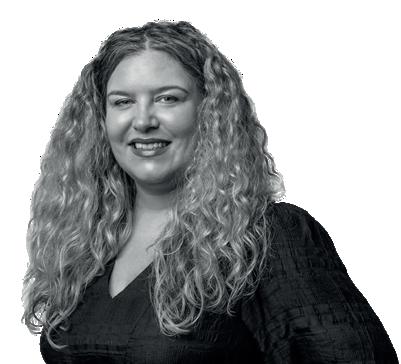
Iona Wright, Partner, Regulatory & Risk Advisory, Walkers
Iona Wright is based in Walkers' British Virgin Islands office where she is a Partner in the firm's Regulatory & Risk Advisory Group.
Walkers is an international financial and professional services law firm providing legal, corporate, compliance and fiduciary services to global corporations, financial institutions, and investment fund managers.


The Private Credit market has grown rapidly over the last decade and in an increasingly competitive landscape, a direct lender is only as good at the deals they originate. Origination is often the GP’s biggest cost of deployment, but a fund manager ignores it at their peril as a weak origination strategy – and therefore an unpredictable deal pipeline – can force them into unfavourable lending scenarios; accepting weak loan terms or lending to borrowers that have previously been refused by the market, in order to deploy capital. Robust deal sourcing is therefore a powerful tool for managing risk and sustaining returns, particularly in challenging economic times.
Despite the growth in private lending created by bank retrenchment following the global financial crisis, roughly 90% of loans in the European market remain bank originated. There are only a finite number of transactions that come to market and so, instead of competing for these loans, we have seen a proliferation
banks and private credit providers that share credit appetite, joining forces with formalised agreements. Indeed, our own origination approach is built around a series of four bank co-lending partnerships that afford us access to some of the most attractive deals in our preferred segment. The significant deal flow this generates (along with self-originated opportunities) allows us to choose only the best c.5% of opportunities to deliver the best risk-adjusted returns for our clients.
However, not all partnerships are created equal. While many claim to work with banks, there is a significant difference between genuine collaboration and mere association. There are a number of characteristics essential to the success of these partnerships for all parties – lenders, investors and borrowers.
Successful bank partnerships must be governed and underpinned by legally-binding, long-term, evergreen agreements in which the banks are obliged to introduce to the lender all transactions they originate


If
the lender has appetite for the transaction,
they can structure the loan alongside the bank and submit a joint term sheet, committing for a larger hold between them...

that sit within agreed parameters (although lenders are under no obligation to do these deals). Without formal agreements, banks might only show deals they do not want to keep on their balance sheets. If the lender has appetite for the transaction, they can structure the loan alongside the bank and submit a joint term sheet, committing for a larger hold between them, and therefore having more relevance and negotiating power in the transaction.
Exclusivity, or the right of first refusal as part of these agreements, guarantees that the direct lender has visibility into all loan opportunities originated by the bank. This provides the direct lender with access to a large volume of both on- and off-market transactions. New potential loans are shown to the direct lender at the same time as the bank, rather than at a later stage after being turned down by other lenders in the market. In many cases, banks also introduce off-market transactions to direct lenders. These proprietary opportunities tend to present themselves via the partner bank’s existing portfolios when the bank is full on a certain name, and the borrower is seeking additional capital to pursue their growth strategy.
Undoubtedly, we are seeing more partnerships in the market between funds and banks, but when allocating capital, LPs are now becoming more adept at separating the substance from the noise, to identify those which are legally binding and exclusive in order to deliver maximum benefit.
Patrick Marshall, Head of Private Credit, Federated Hermes

At the forefront of the private credit industry in Europe, Federated Hermes Private Credit provides institutional investors with access to some of the leading loan opportunities in the region. The highly experienced investment team draws on their unique origination network: utilising both in-house deal-sourcing and formal, exclusive origination agreements with local partner banks as they seek to deliver attractive solutions in direct lending and real estate debt. Through a differentiated deal origination pipeline which includes right of first refusal on circa 300 loans per annum, many of which are not available to the broader market, the team connects investors to lending opportunities with strong potential for consistent, uncorrelated returns and stable cashflows.


...not all partnerships are created equal. While many claim to work with banks, there is a significant difference between genuine collaboration and mere association.
Patrick Marshall, Federated Hermes

Nathalie Sadler, Partner, Dechert
Evergreen funds are in vogue in the private credit space but what is the attraction, what do they look like and what are the key challenges?
Adopting an evergreen structure can be mutually beneficial to managers and investors. For the manager, (truly) evergreen funds enable continuous fundraising, with no need to artificially wind down a structure and create a new vintage. Similarly, many investors welcome a permanent product, especially given the ability to exit the structure. Further, evergreen funds can support smooth deployment and offer constant reinvestment. These funds also encourage diversification as they grow, which can be more limited in a closed-ended structure.
Evergreen funds are also popular in the ‘retail’ context as funds with a long life are not suitable for these investors.
Evergreen funds tend to be bespoke structures and there is no market standard. ‘Truly’ evergreen funds allow investors to enter and exit the structure on a continuous basis and typically, in the private credit space, with assets going into run off when an investor seeks to leave. However, variations are common and distinctly different approaches are also seen – such as funds with set vintages or a formal investment period. Other variations exist around whether there is a draw down structure and, if so, whether a queuing mechanism is employed. The latter can be particularly helpful where deployment will be staggered.
Like the structures themselves, a diversity of fee structures is seen in this space. Typically, the fee


...evergreen funds can support smooth deployment and offer constant reinvestment. These funds also encourage diversification as they grow, which can be more limited in a closed-ended structure.
Nathalie Sadler, Dechert



Evergreen funds are moving from an additional option to an investor expectation. Therefore, despite headwinds of requiring a bespoke structure with various structural and operational challenges, it seems they are here to stay.
Nathalie Sadler, Dechert
structure will follow the nature of the fund mechanics (e.g. net asset value based versus commitments, capital contributions and waterfalls) but some form of hybrid model is common.
Firstly, it is key that the underlying asset profile is aligned with liquidity offered. An overall liquidity package should be considered, with common tools including lock-up periods, gates and significant notice periods. These may be in addition to a run-off mechanism, meaning investors do not immediately receive redemption proceeds. In addition, some managers tweak their strategy to have more liquid features. The frequency of valuation also needs to align with both the asset and liquidity requirements of the fund. Liquidity and an ever-changing investor population are an ongoing management and operational challenge. These require the manager to implement a broader skillset than an equivalent closedended fund.
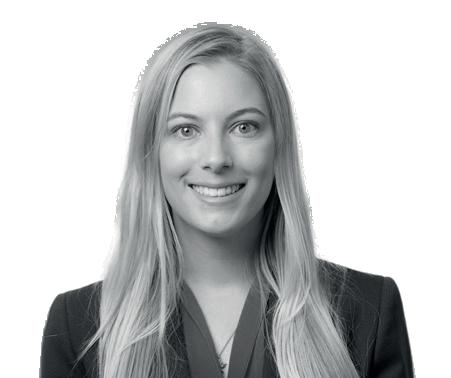
European open-ended loan originating funds will face additional hurdles from April 2026 when AIFMD II fully comes into effect (which should also be considered in respect of current projects as they will not benefit from grandfathering provisions). In order to work around increased regulator involvement, managers are considering multiple approaches. For example, seeking to structure these funds so they are treated as closed-ended or, if possible, so that they do not have a European nexus. Some managers may also tailor the strategy so it is not caught by
Evergreen funds are moving from an additional option to an investor expectation. Therefore, despite headwinds of requiring a bespoke structure with various structural and operational challenges, it seems they
Nathalie Sadler, Partner, Dechert

Kunal Khanna, Managing Director, Zugzwang Capital
Market practitioners love to quote a phrase attributed to Mark Twain, that “history doesn’t repeat itself, but it often rhymes”. When it comes to the development of new asset classes, financial history tells us that they evolve in a similar manner.
At first the new asset class is treated with skepticism as people struggle to understand the benefits it delivers. Raising capital is difficult and, as a result, risk premiums are high, allowing intrepid early adopters to earn large returns. Over time, as the asset class builds a track record, its risks become better understood and capital flows in, causing risk premiums to fall. Eventually, excess returns are competed away and there is no longer “easy money” to be made.
Just like the financial innovations that came before it, private credit, as an asset class, has evolved in this manner, growing by 10x over the past 15 years while simultaneously having spreads over public market

equivalent debt narrow.* It is now a $2tn industry that is very much a part of the financial mainstream. For capital allocators interested in earning ever elusive excess returns, the question is “what’s next”?
Here too, financial history can be a guide. Once an asset class matures, attention turns to widening access and lowering its cost. Think about the evolution of public equities from the creation of the first index fund in 1971 to 50% of global equities being held by passive funds today, driven by the relentless reduction of fees and expansion of access to anyone with a smartphone. While this process marches on in private credit - high net worth investors are the next frontier - there continue to be opportunities in areas away from where the bulk of attention is focused. Here are three that I have identified, though there are certainly more:
• Geographies where the share of non bank lending
* McKinsey & Company: The next era of private credit. (24 September 2024). See link

Like asset classes of the past, as private credit continues to grow, fund managers will split into two categories: those delivering beta, and those seeking niche opportunities that can deliver alpha.
Kunal Khanna, Zugzwang Capital



Private credit, as an asset class, has grown by 10x over the past 15 years while spreads over public market debt have steadily narrowed.
Kunal
is low compared to traditional bank lending. This is, perhaps, an obvious one and borrows from the long tradition in finance of taking what works in developed markets and expanding it to developing countries. Risk premiums in the rest of the world are likely to remain high as these markets catch up with the US and Europe and, in certain places, the higher premiums may not be justified by the underlying level of risk.
• Specialty lending. By this I mean lending that is focused on particular sectors where, again, the penetration of non bank lending is low or asset backed lending against unusual assets. Examples include the aviation industry, healthcare royalty lending and legal finance.
• Special situations, which is a catch-all to describe unusual opportunities that do not fit into a well defined bucket and, therefore, do not comply with the vast majority of private credit fund mandates. These may be situations that are too small to attract widespread interest, that straddle credit and equity investing, or that exist for a very limited period of time and, therefore, require particularly rapid decision making and capital deployment.
Like asset classes of the past, as private credit
continues to grow, fund managers will split into two categories. The larger category will accommodate ever increasing amounts of capital deployed at average rates of return, providing investors with “beta”. The other category will comprise managers who are looking for niche opportunities that can deliver “alpha”. Both investors and allocators who want to participate in this more exclusive category will have to look further afield in their pursuit of better than average performance.
Kunal Khanna, Managing Director, Zugzwang Capital
Zugzwang Capital is an investment manager focused on fundamentally driven investment opportunities, wherever they may be. The firm manages investment funds in global public equities and UK private credit, as well as sourcing and participating in co-investment opportunities across an extensive network of


Explore our insights on marketing in the ever-evolving world of private markets. The 2025 handbook delivers actionable strategies and best practices to empower managers, marketers, investor relations and communications professionals.







Build and communicate a compelling private markets brand, from di erentiation and unified identity to crafting e ective presentations and engaging with the media . Discover how to balance routine with creativity, leverage AI in investor relations, and maximise LinkedIn as a key platform. With practical tips on white papers, press releases, social media strategies, and setting the right tone, this guide provides the tools to thrive in a competitive landscape





Private credit has transformed from a niche strategy into a core institutional and private investor allocation. Preqin forecasts global private debt AUM at $2.64 trillion by 2029, nearly doubling from 2023. Direct lending alone is expected to account for two-thirds of that growth, as companies increasingly turn to private lenders over banks for flexible, rapid capital solutions.
Although private credit has been a feature of private markets since the early 1990s, it exploded following the 2008 Global Financial Crisis when tighter regulation prompted banks to reduce exposure to riskier credit loans. Today, private debt accounts for a substantial share of private markets, growing from $557 billion in AUM in 2014 to more than $2 trillion in 2023. In fact, most private middle market companies now carry at least some private credit-backed debt.
At the same time, investor demand is shifting Recent
research indicates 30-40% of family offices plan to increase private credit allocations in 2025, attracted by higher yields and floating-rate structures amid persistently high rates. Yet this capital is increasingly discerning. Fundraising, while robust in aggregate, has become more concentrated: mega-funds continue to attract most commitments, leaving mid-market managers competing for a smaller share. Hedge funds such as Millennium, Point72, and Third Point are also moving into private credit, seeking stable, higher returns. This intensifies competition, making operational discipline even more critical for managers aiming to stand out.
The investor base itself is also changing. Beyond traditional institutional LPs, there is growing participation from family offices, wealth managers, and other private capital pools, each bringing different return targets, liquidity needs, and engagement preferences. As private credit allocations broaden,


Leading firms treat operational excellence as strategic, integrating data and automating workflows to track fundraising in real time, adapt outreach swiftly, and provide clear updates.

understanding and communicating return drivers remains critical. NAV can be misleading, as distributions reduce NAV while enhancing returns. Ultimately, total return (combining income and capital appreciation) offers the clearest measure. Firms communicating these nuances swiftly and transparently during fundraising demonstrate operational excellence and build credibility with this diverse audience.
Building on transparency, managers are often limited due to disconnected systems hinder forecasting, slow decisions, and undermine confidence internally and with investors. Leading firms treat operational excellence as strategic, integrating data and automating workflows to track fundraising in real time, adapt outreach swiftly, and provide clear updates. Freeing teams for credit analysis, execution, and investor education.
This operational discipline is now becoming a strategic differentiator. Enabling managers to (optionally) give investors more insight into their operations and performance. This enhanced level of reporting, once
exclusively for the largest institutional investors, is now an ability stand out.
Private credit’s runway remains strong as borrowers seek alternatives to banks and investors pursue diversification and steady income. As the asset class matures, success will depend on executing with clarity and professionalism, sourcing quality deals, and structuring attractive terms.
Ultimately, private credit’s future will favour managers who combine strong credit judgment with disciplined execution. It’s a simple truth: in a crowded market, how you operate is as important as where you

Didier Lambriex, Managing Director, Bite
is a Software-as-a-Service (SaaS) platform providing innovative, scalable solutions for the alternative asset and wealth management industry. Designed to simplify and streamline the entire investment process, Bite Stream offers end-to-end capabilities across fundraising, investor relations, reporting, and data management. Bite Stream is trusted by leading alternative asset managers, wealth managers, fund administrators, and other investment professionals worldwide for its commitment to security, efficiency, and operational excellence.


...private credit’s future will favour managers who combine strong credit judgment with disciplined execution. It’s a simple truth: in a crowded market, how you operate is as important as where you deploy capital.
Didier Lambriex, Bite Stream
Alastair Crabbe acrabbe@brodiecg.com
Darryl Noik dnoik@capricornfundmanagers.com
Jonty Campion jcampion@capricornfundmanagers.com
Lynda Stoelker lstoelker@capricornfundmanagers.com

Visit www.alternativeinvestorportal.com


